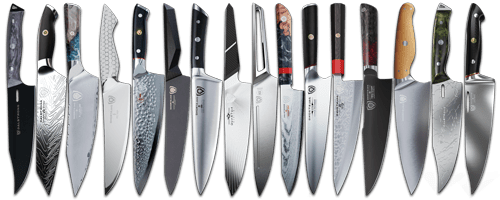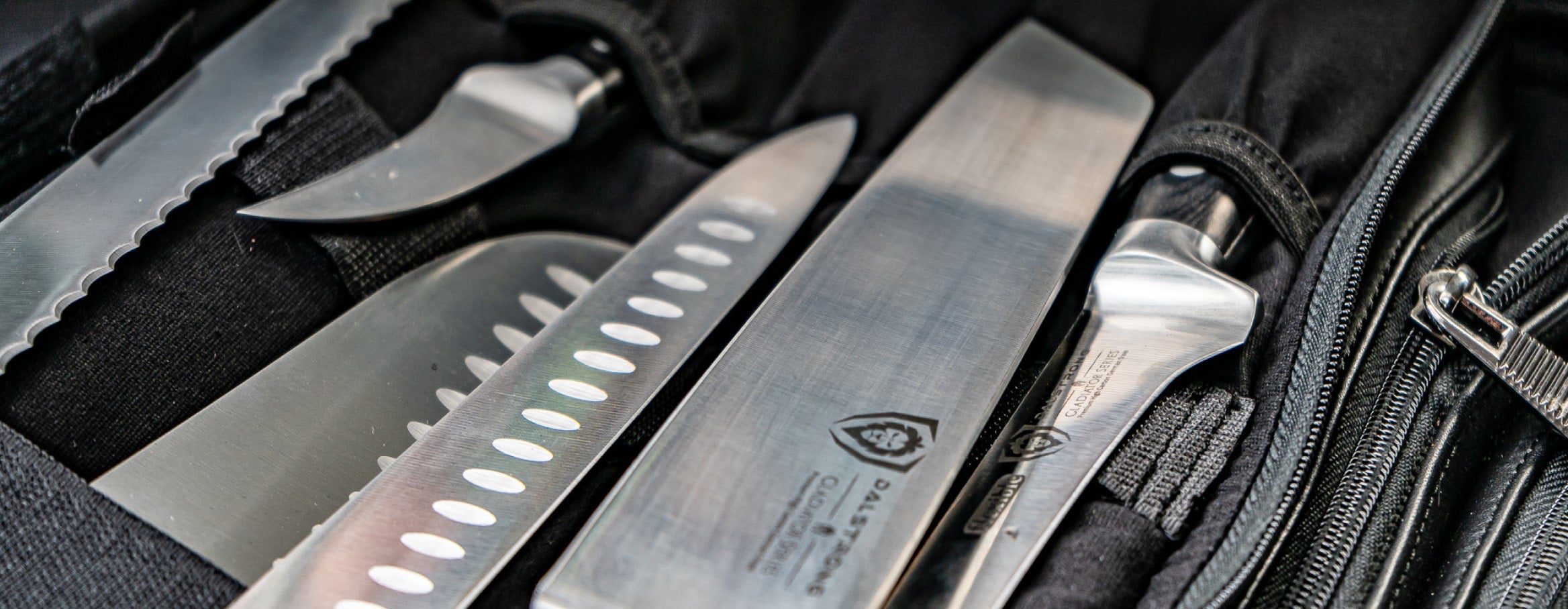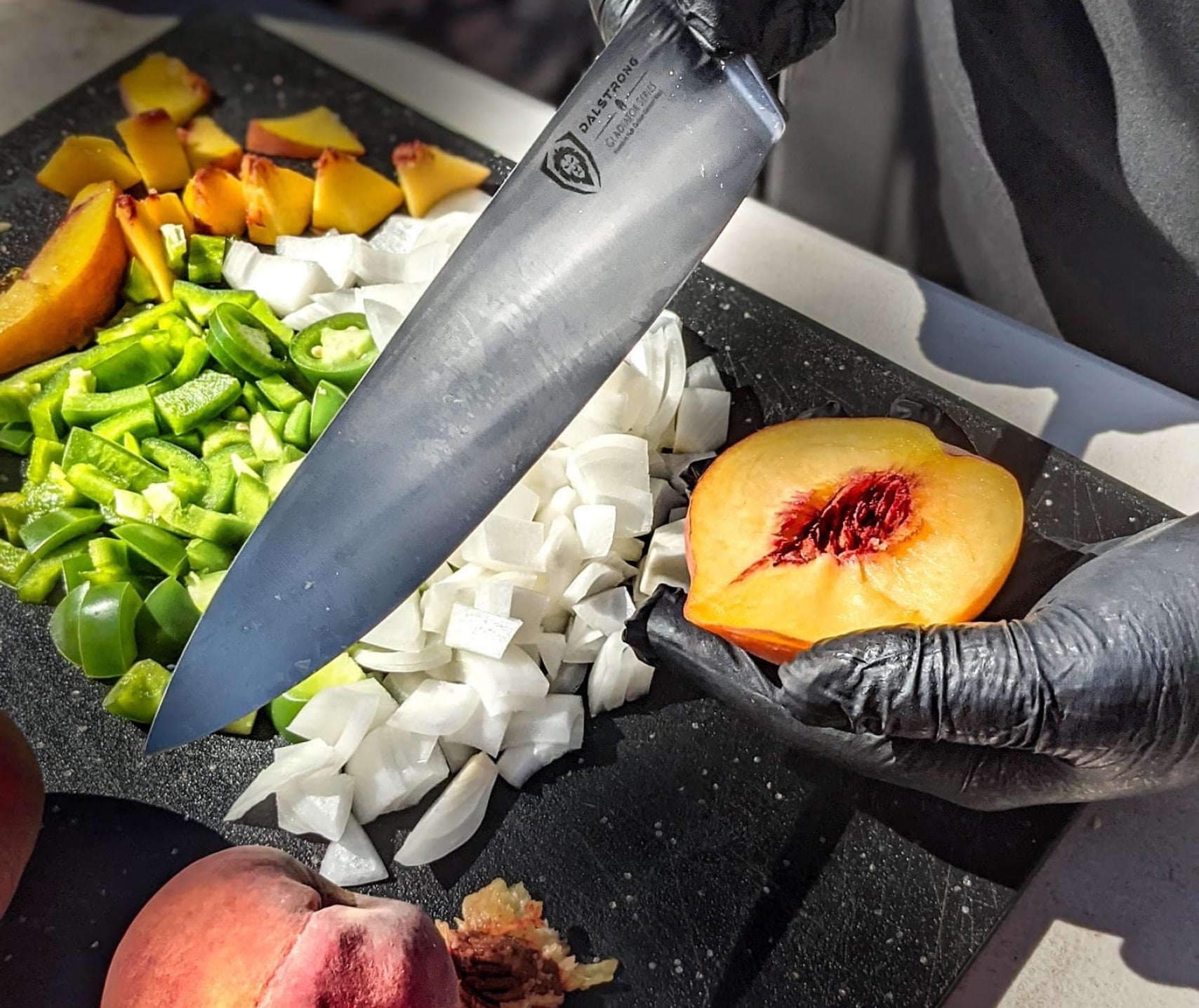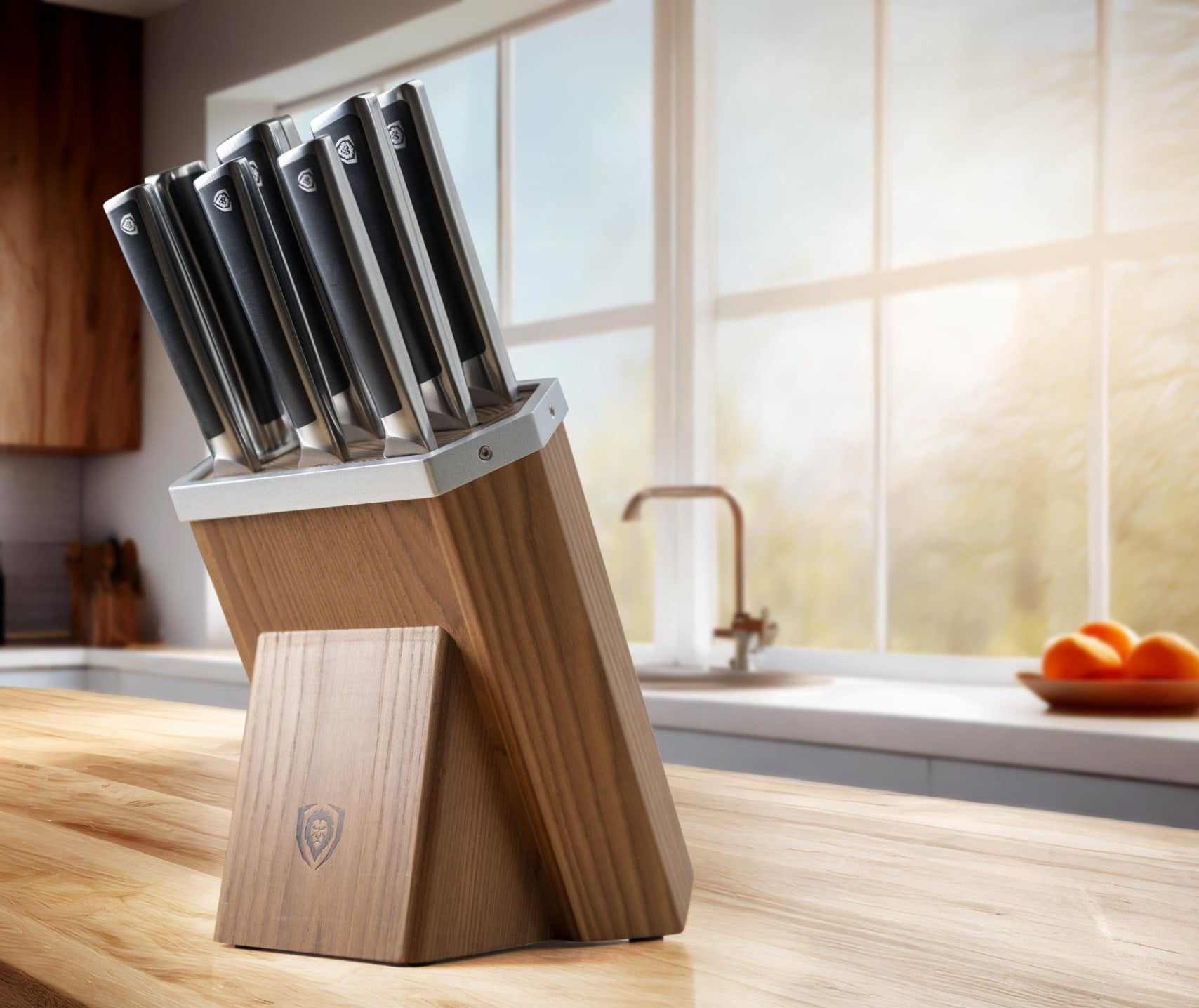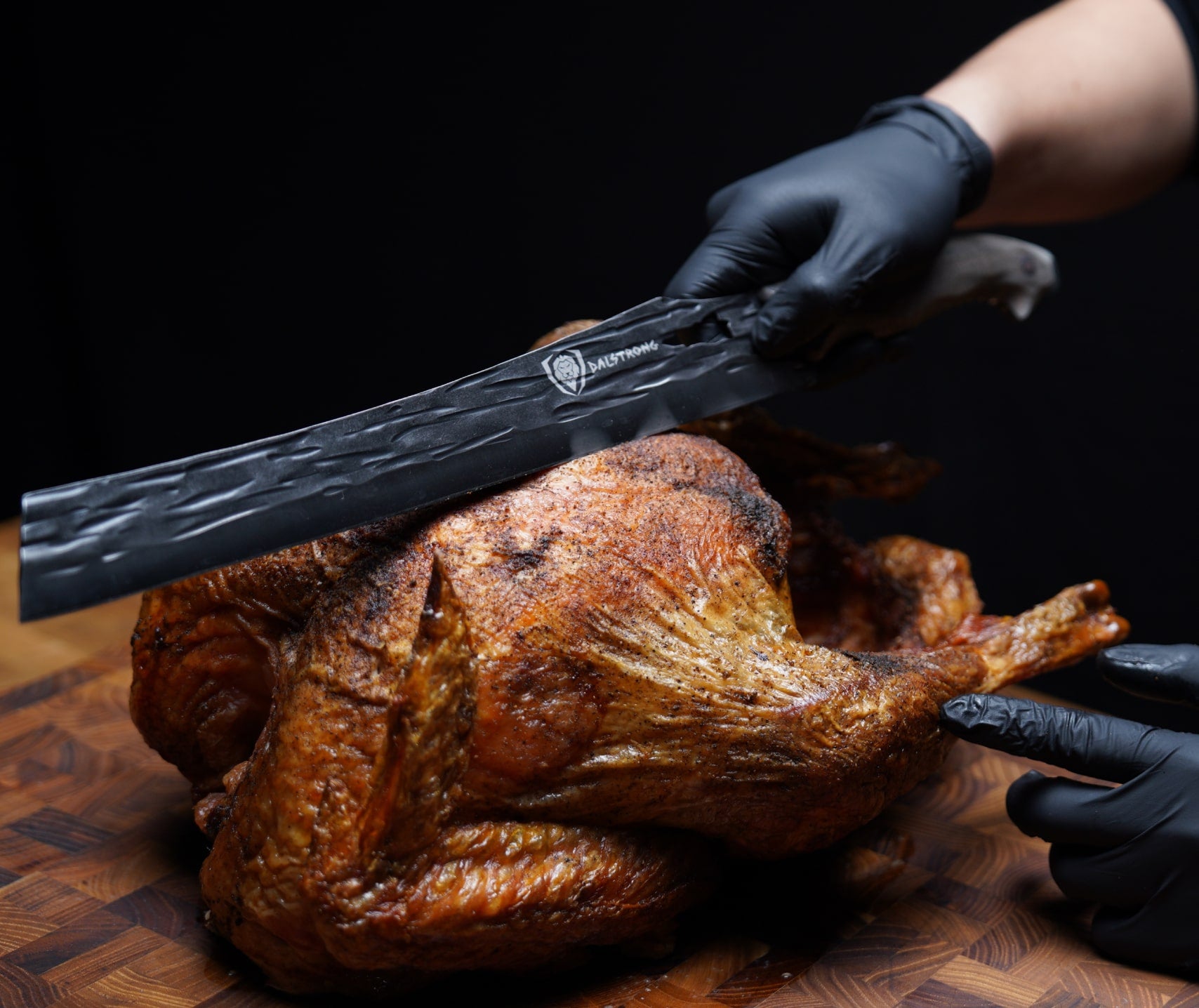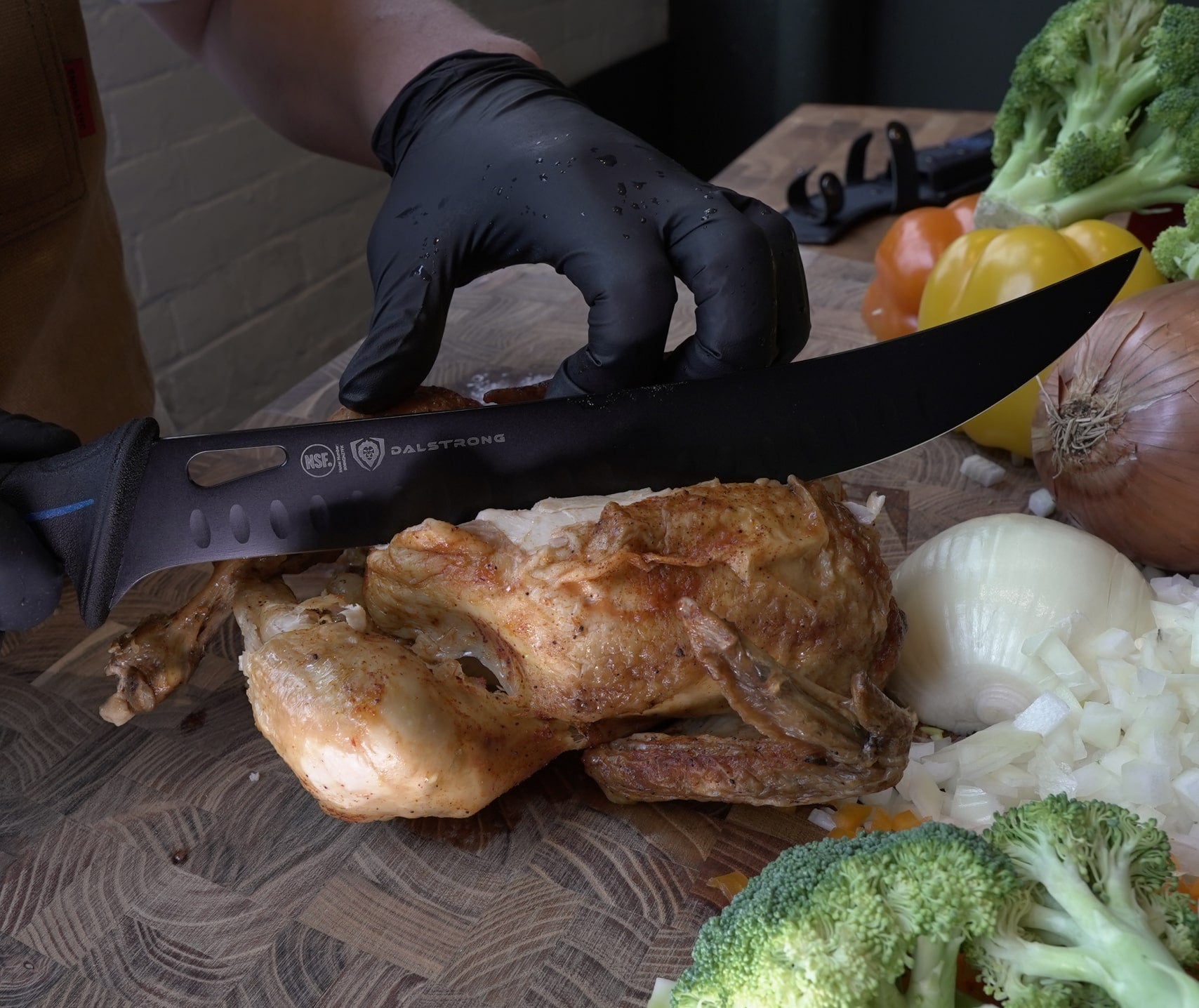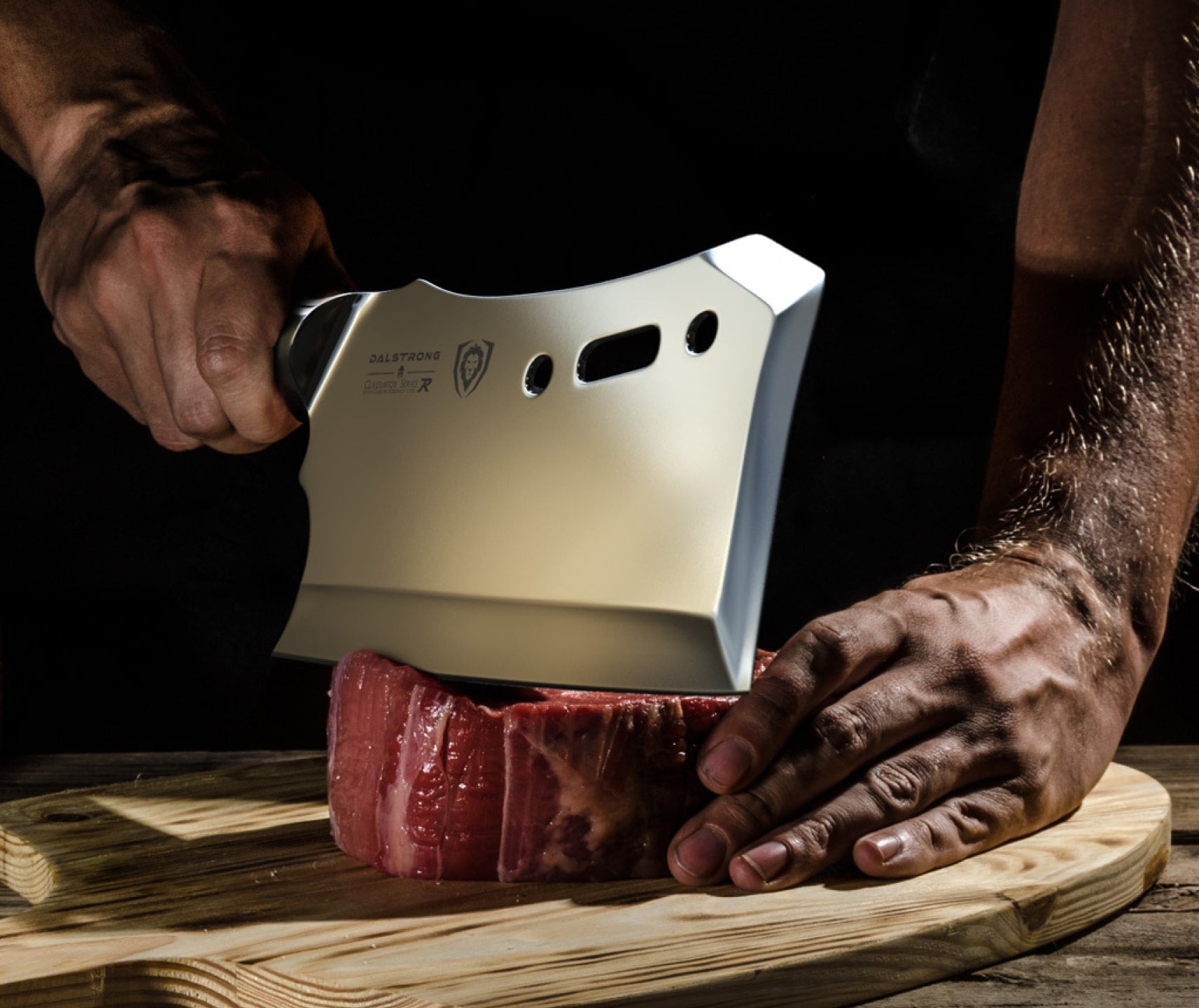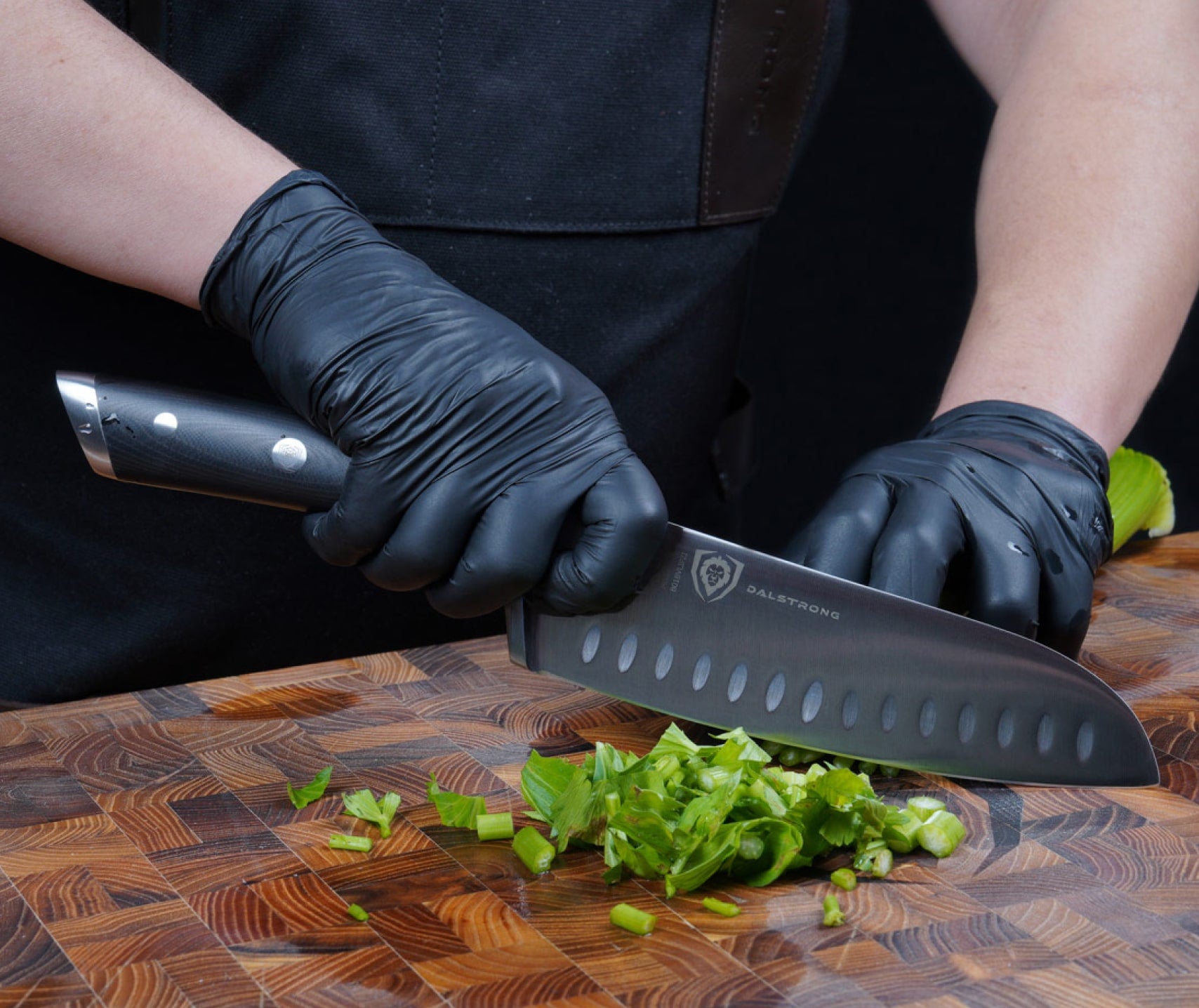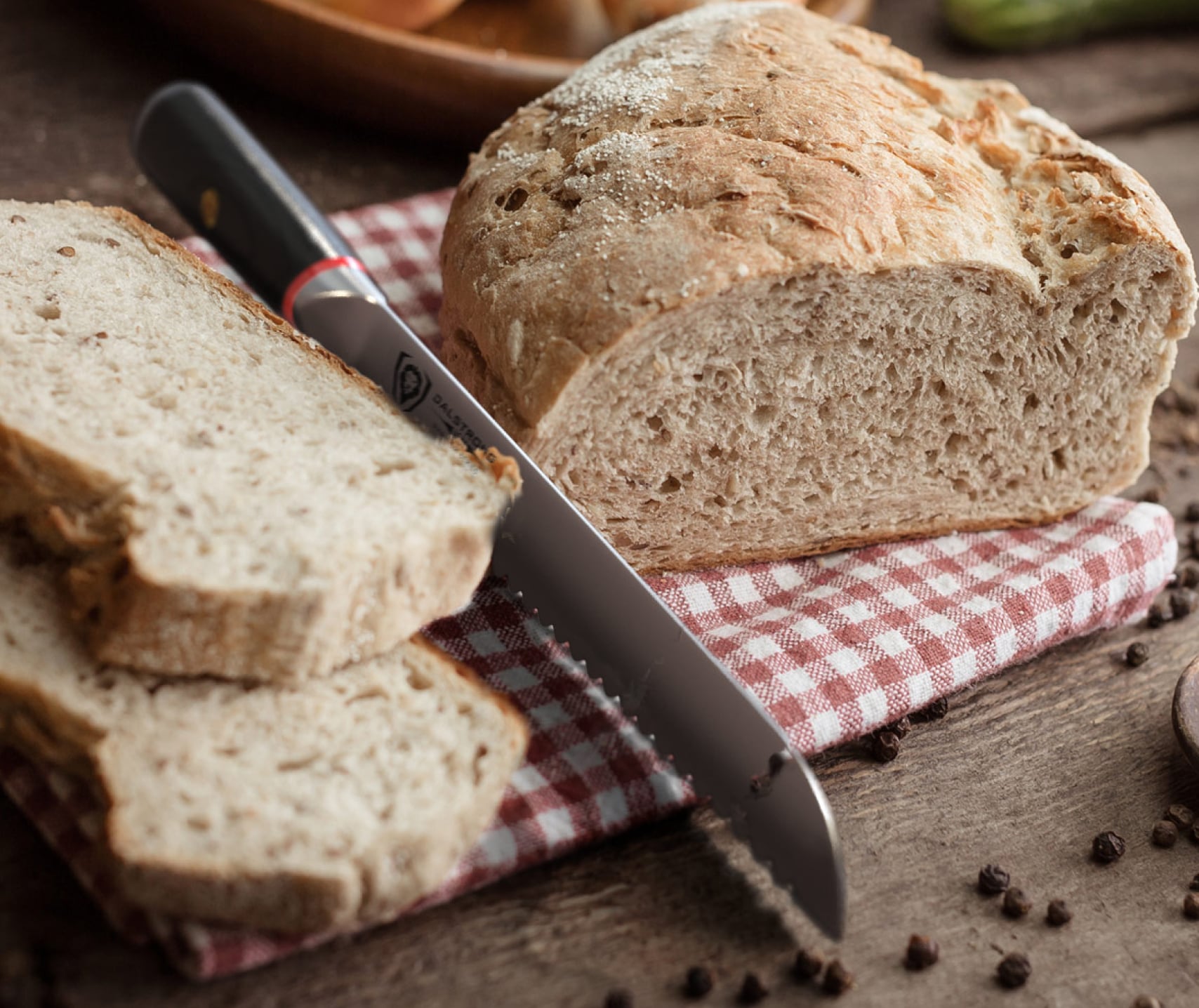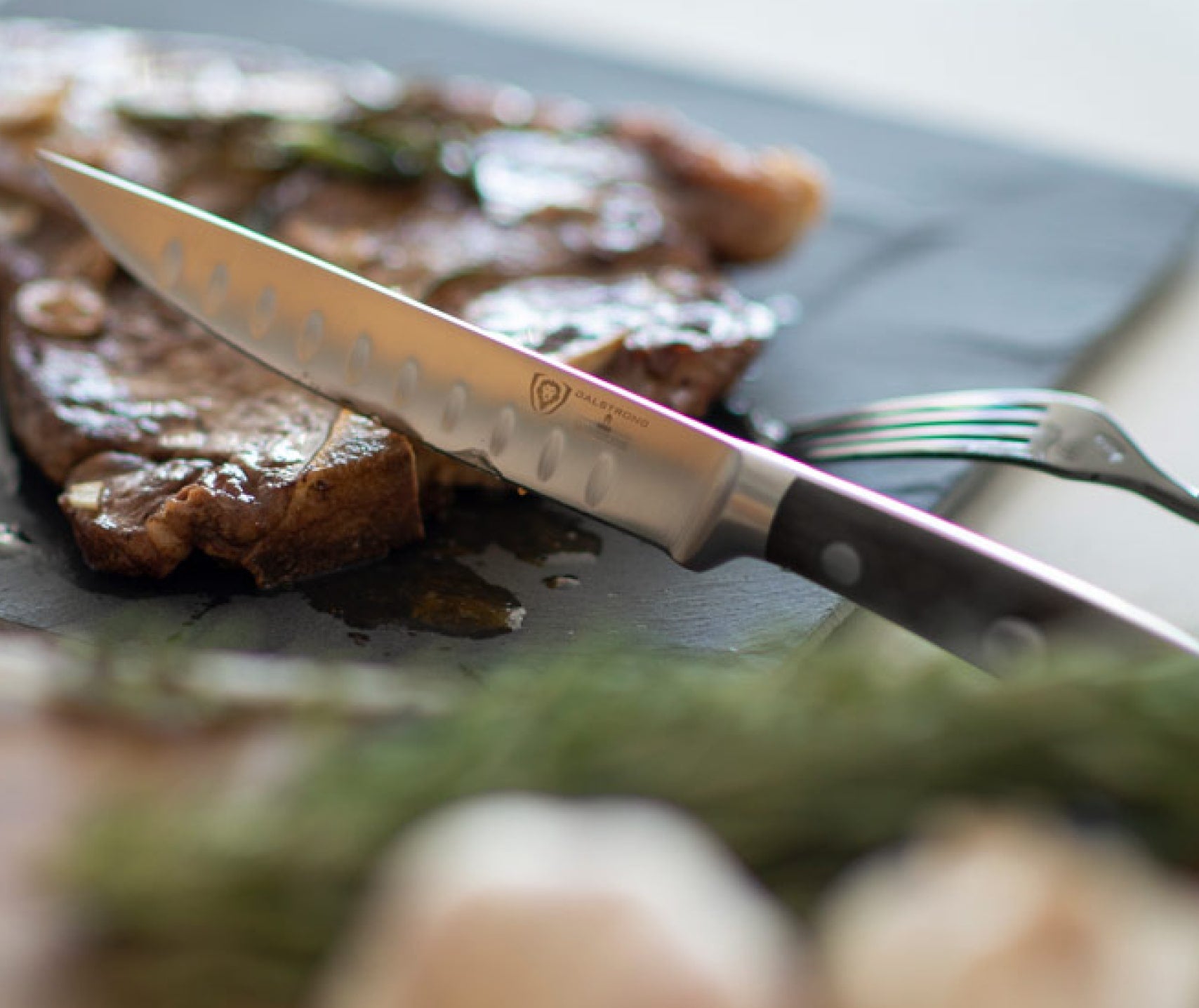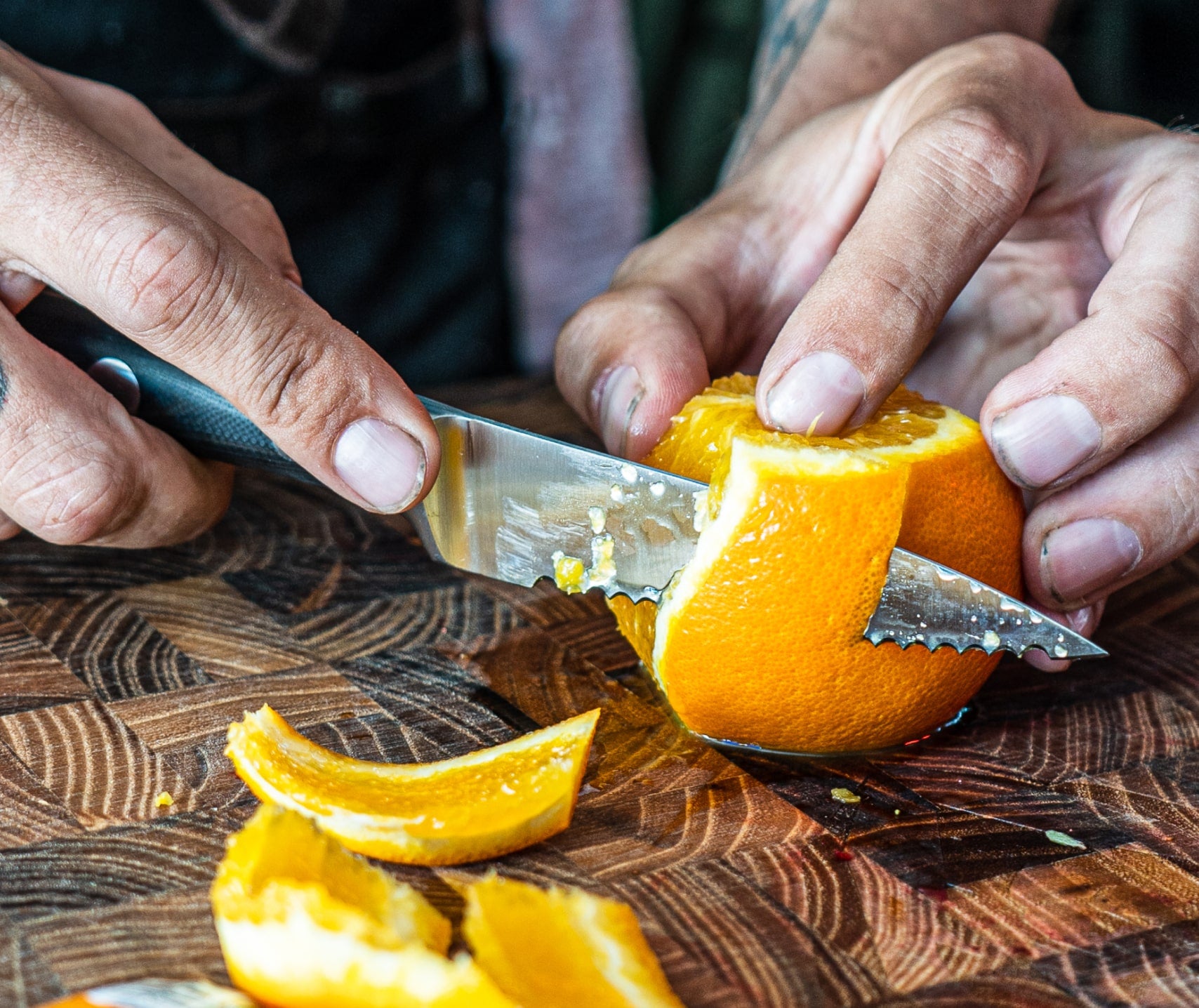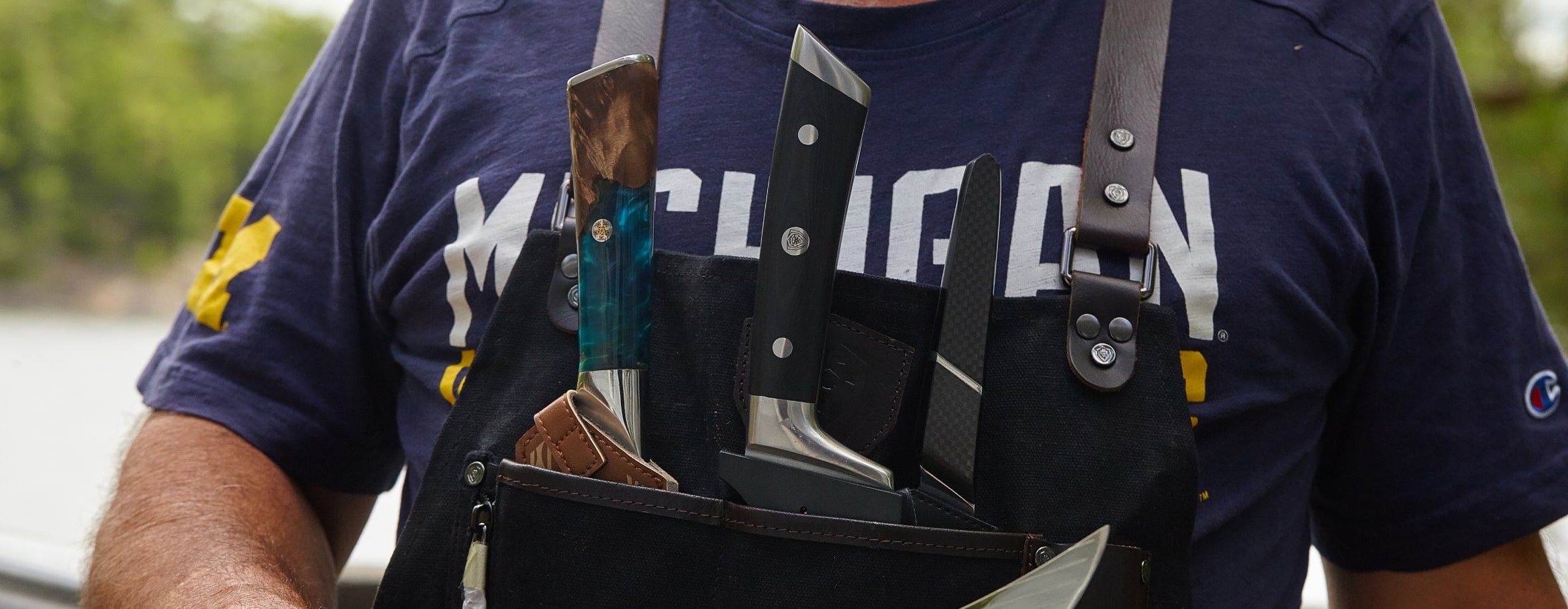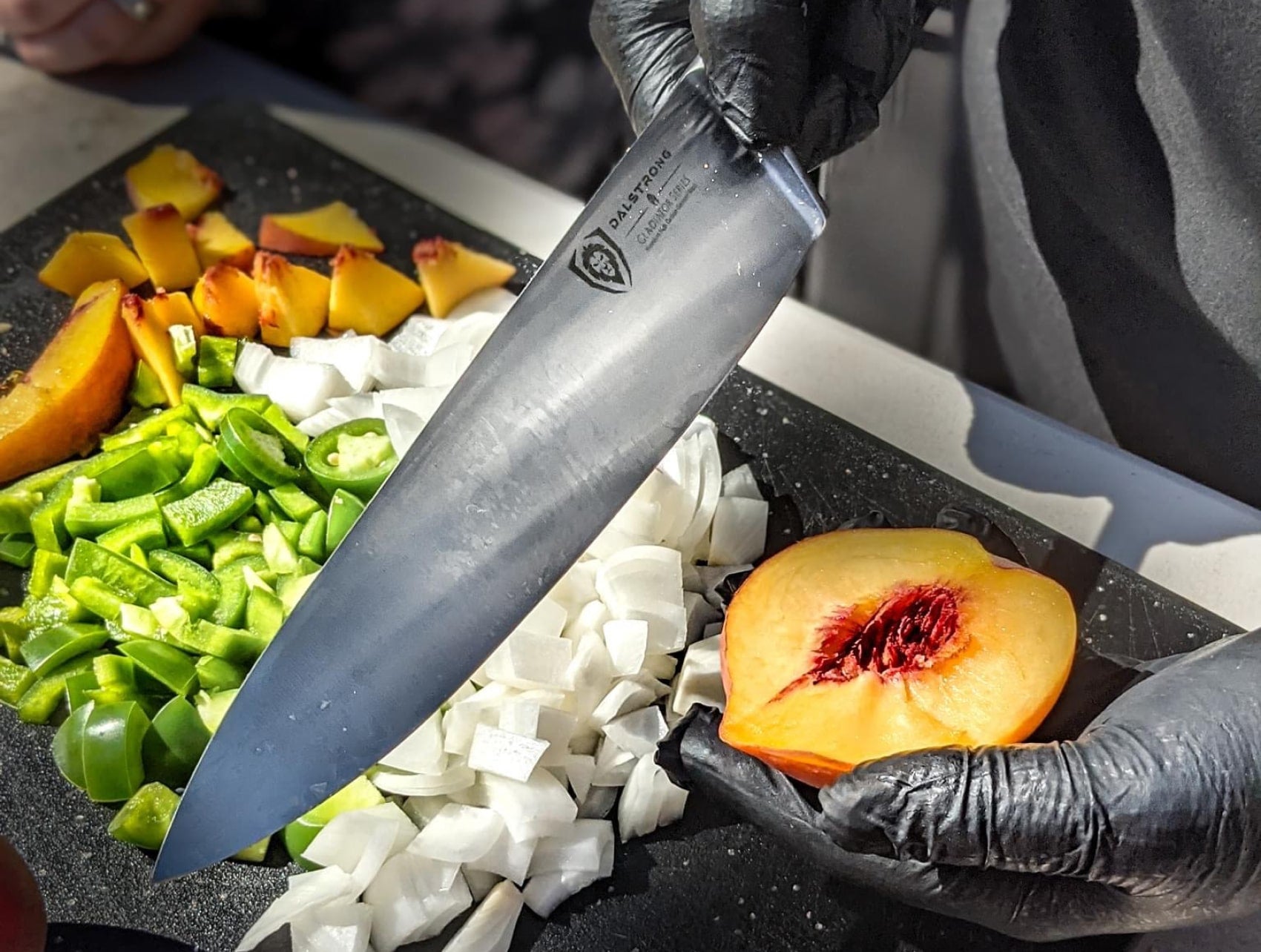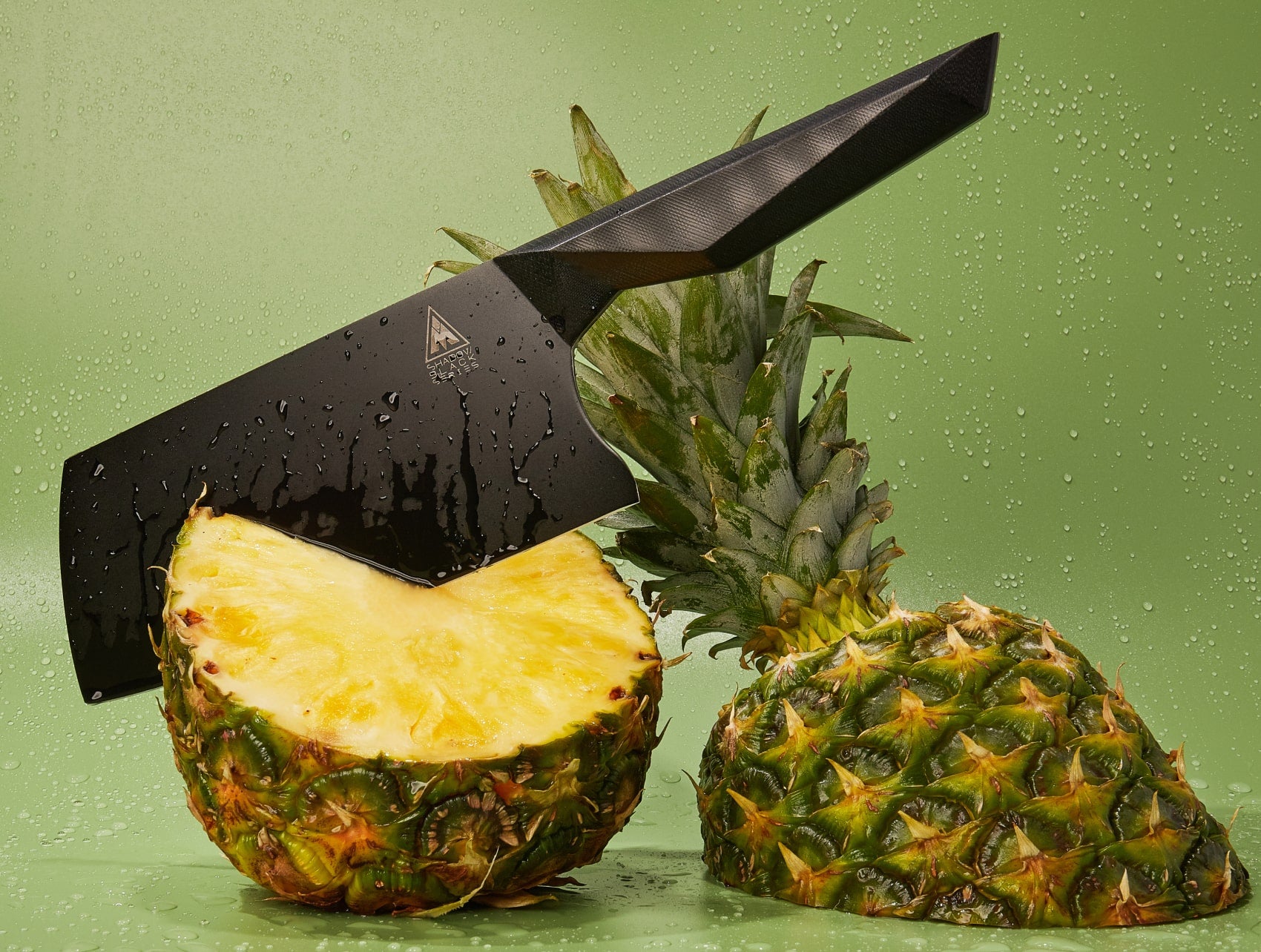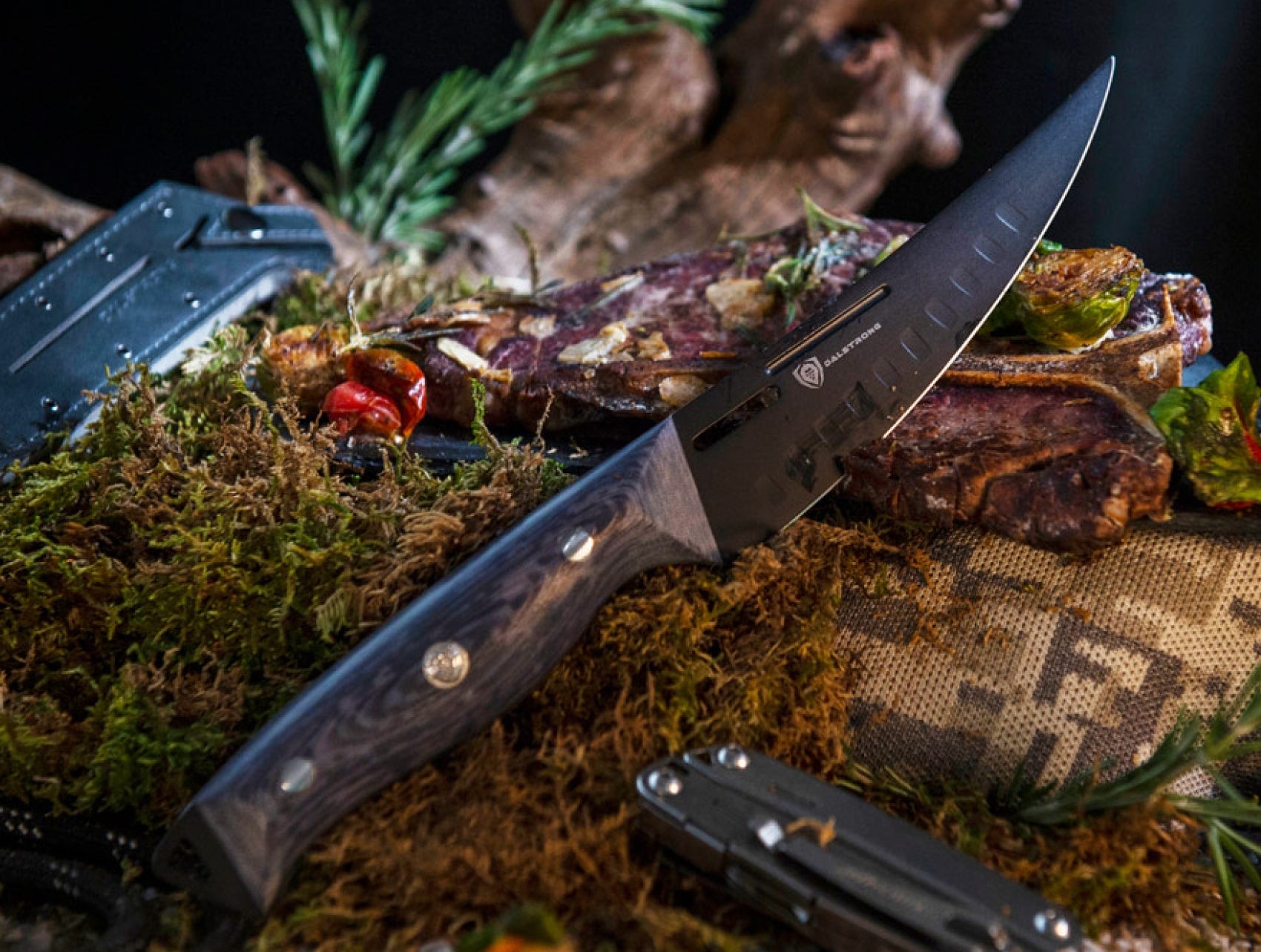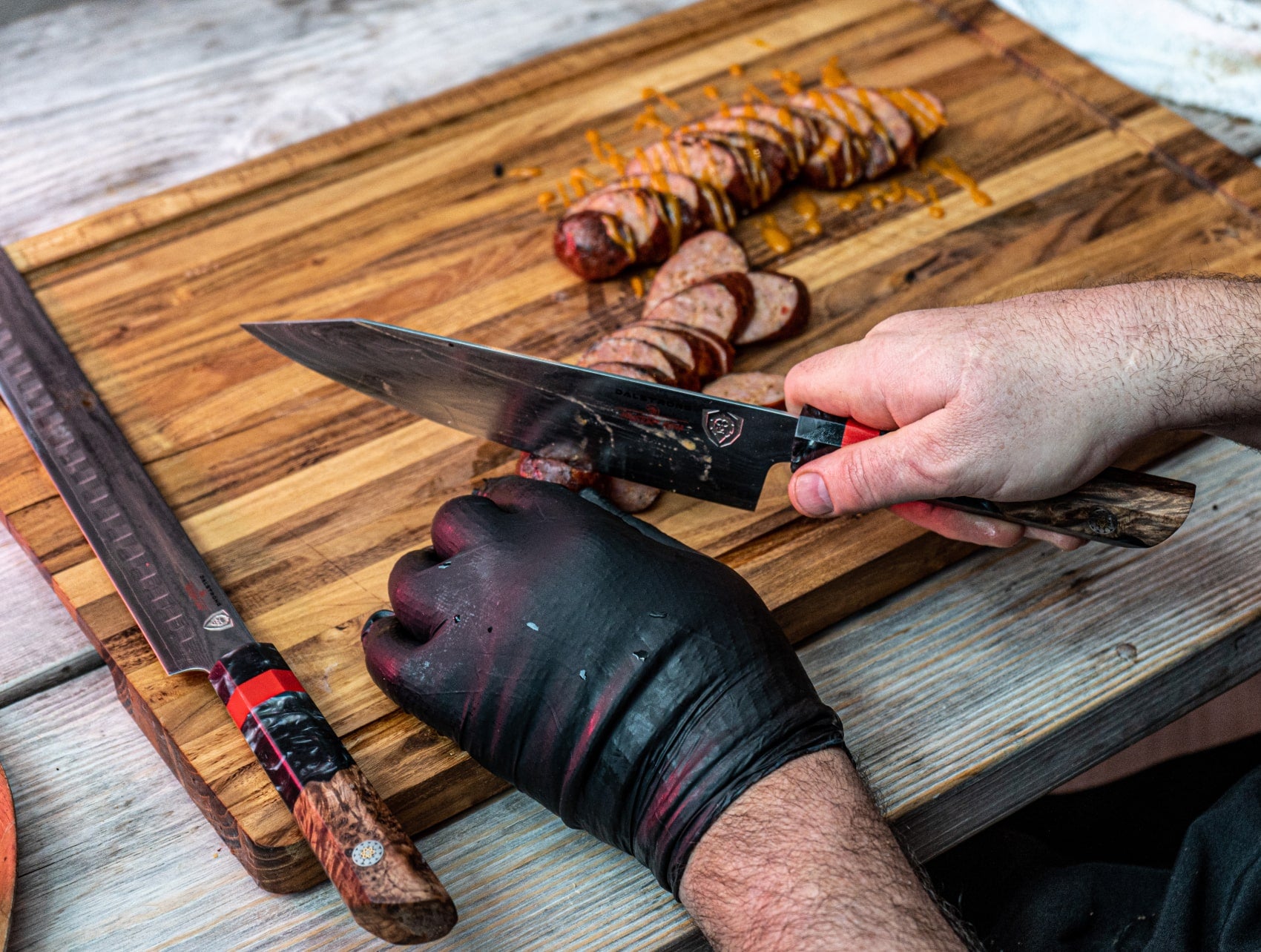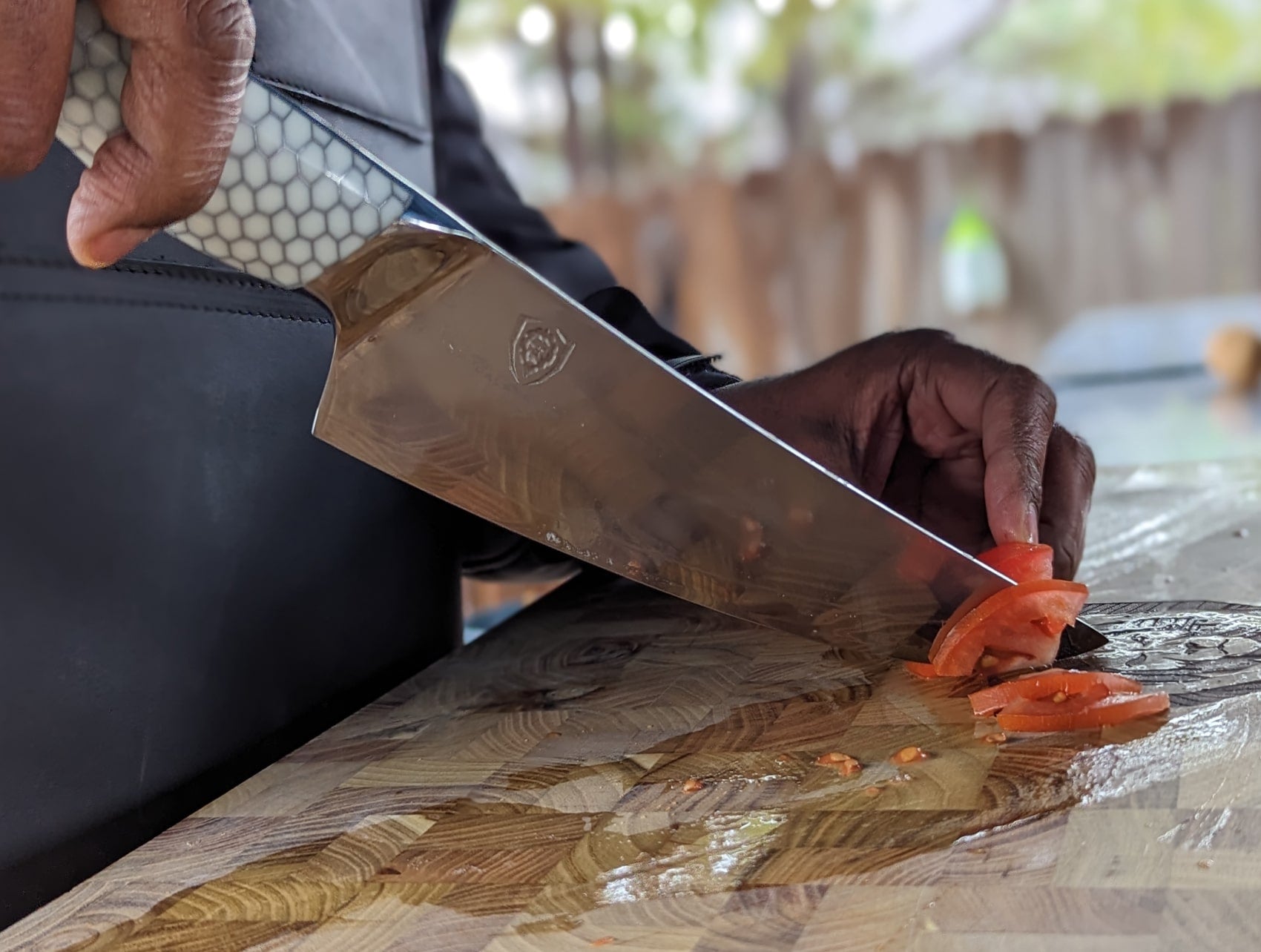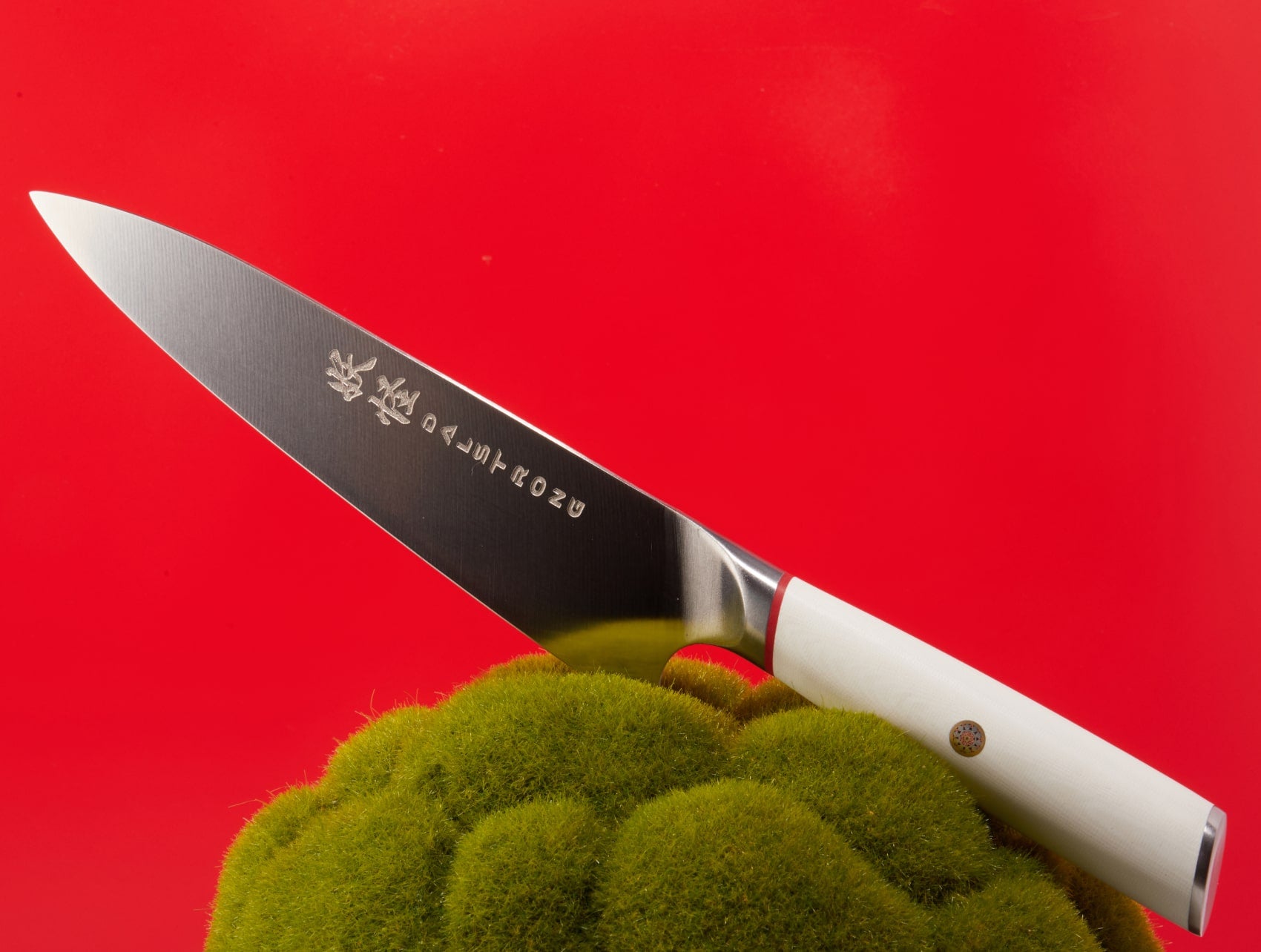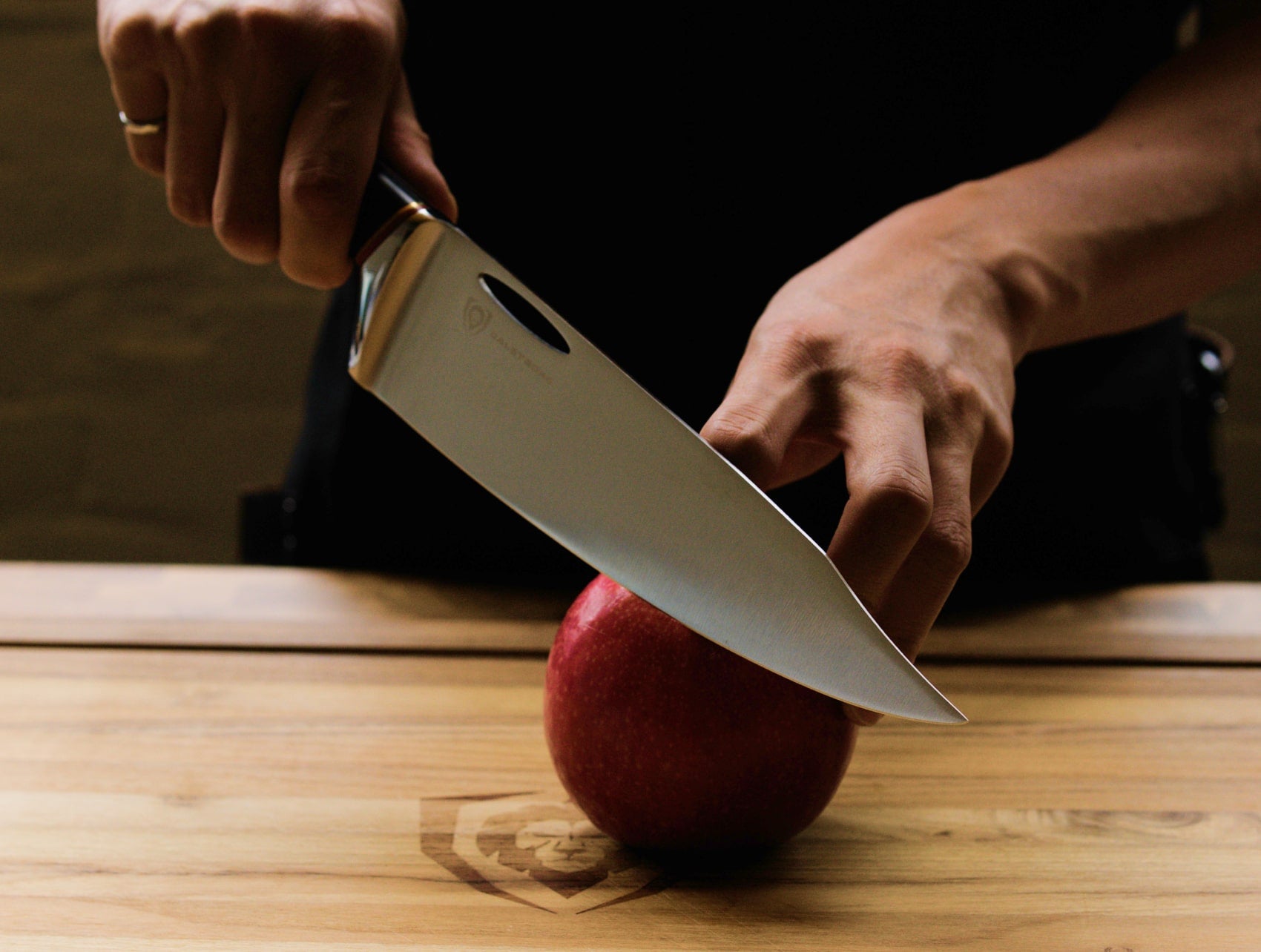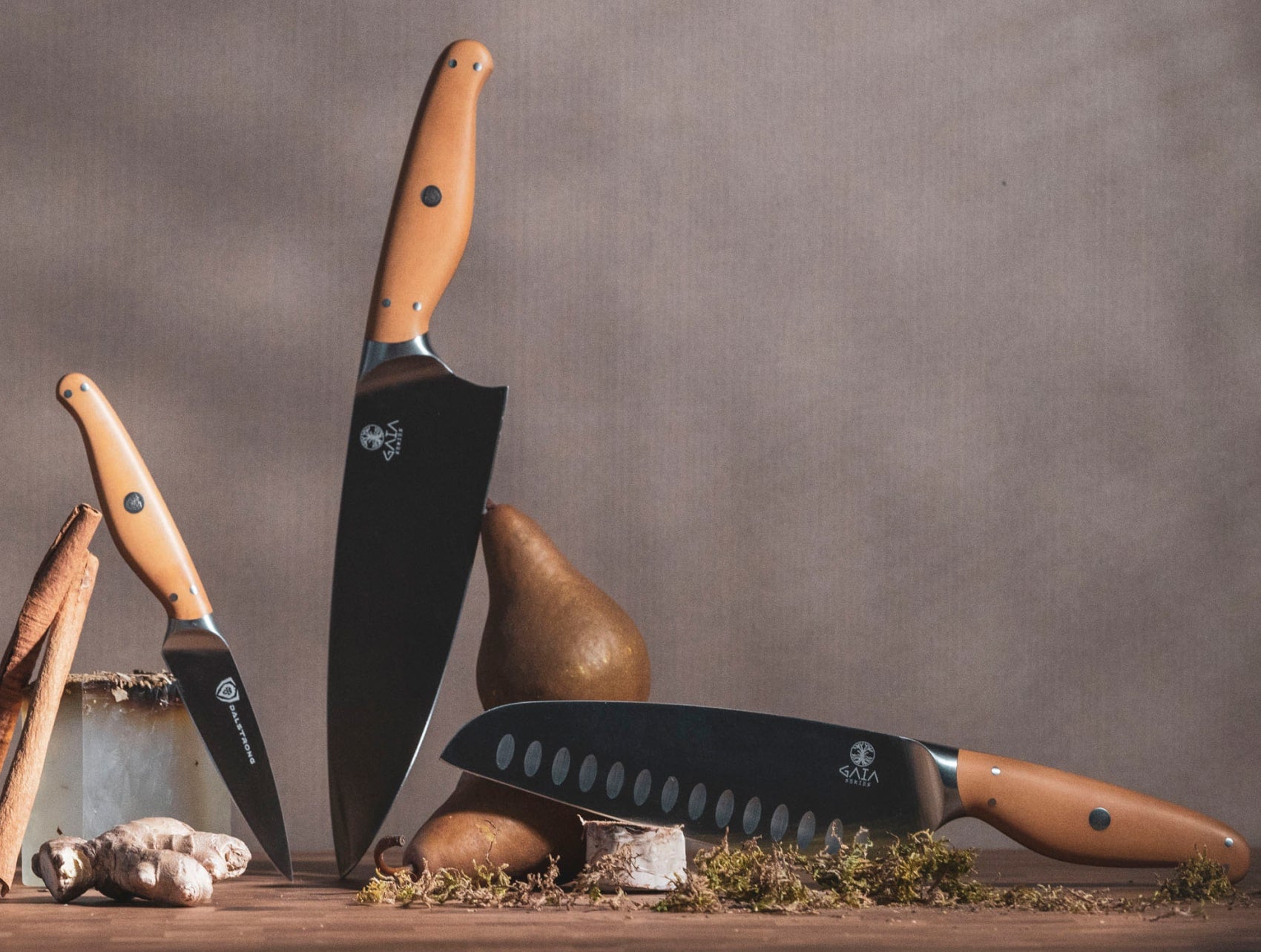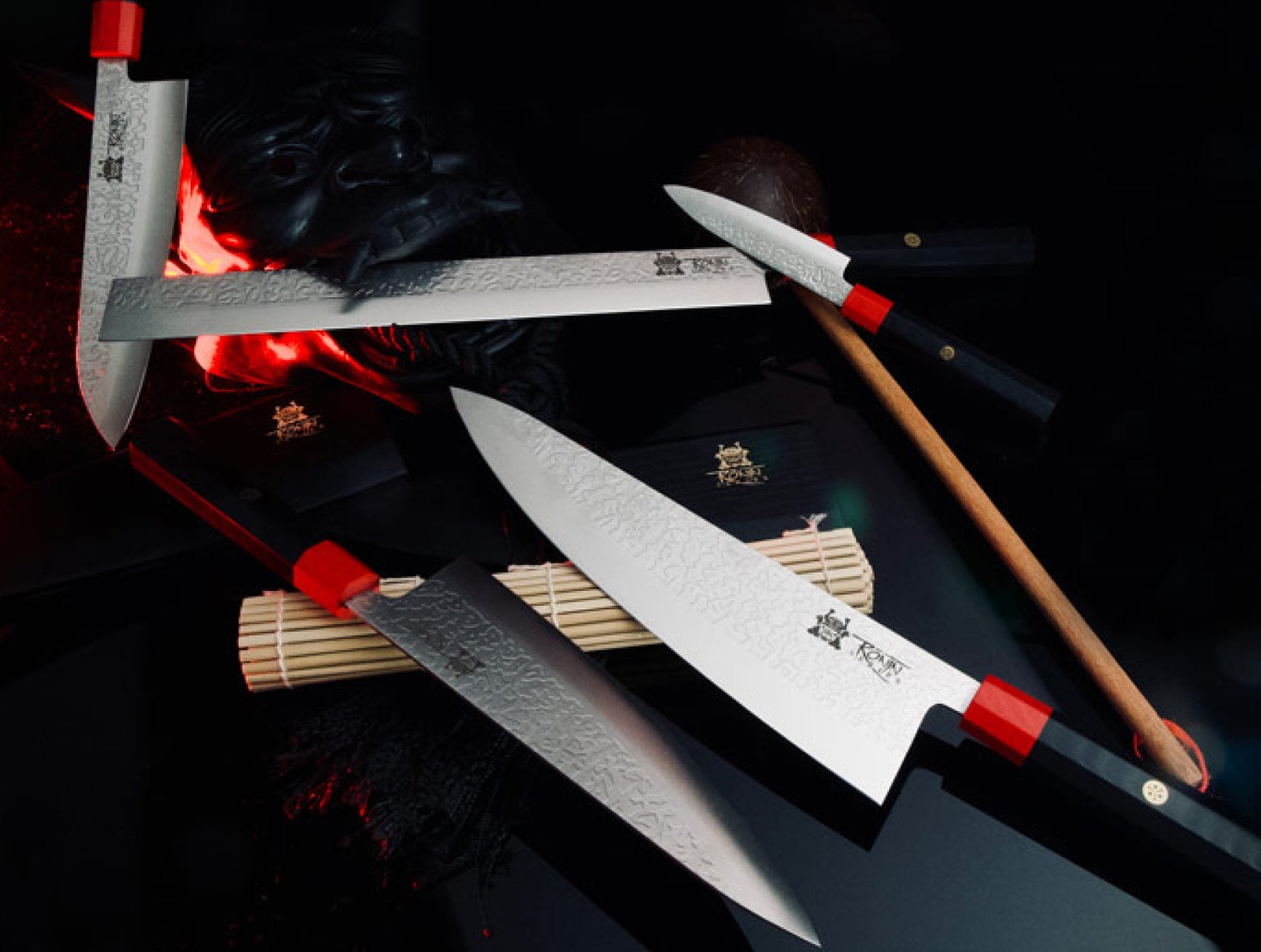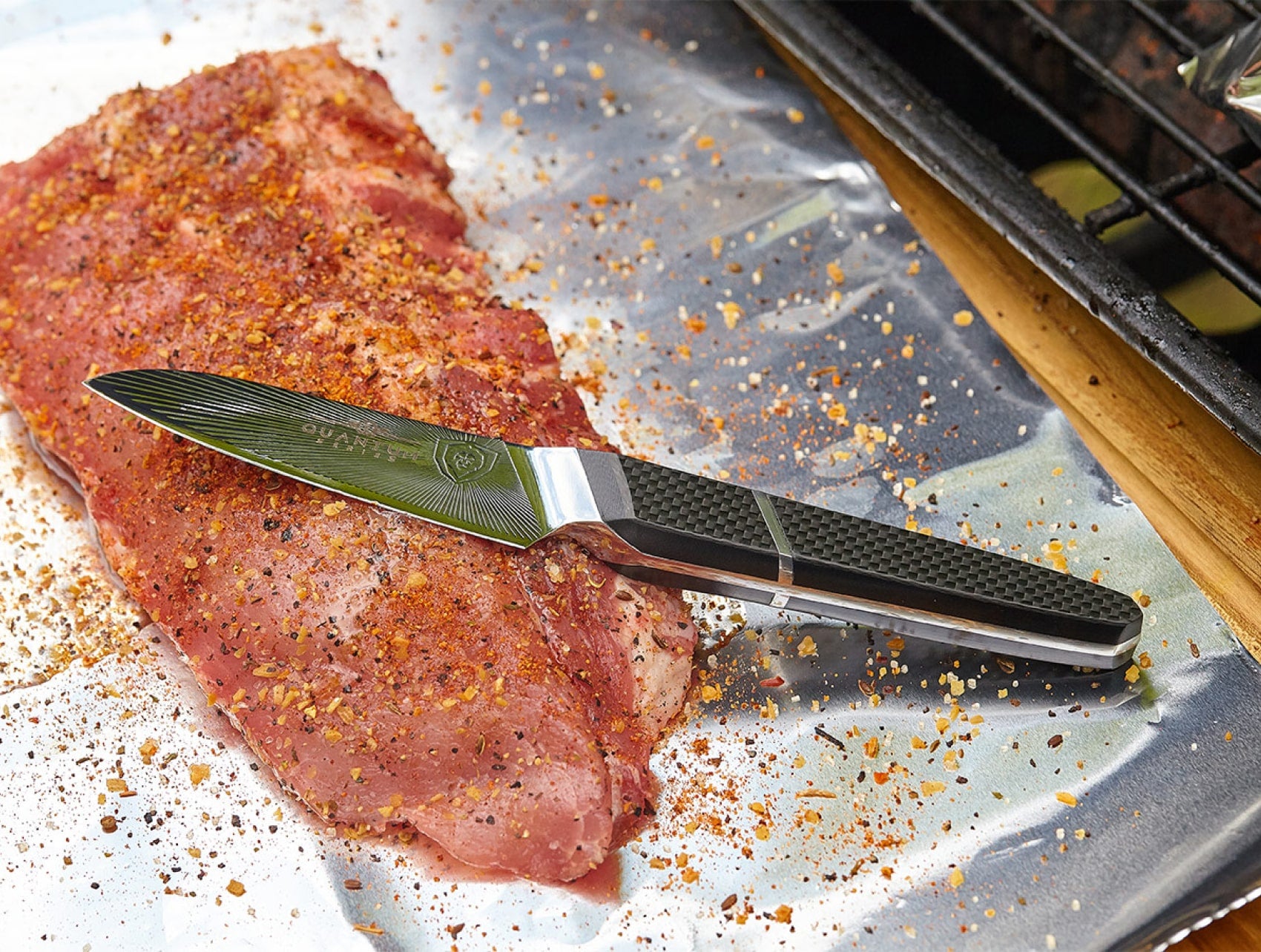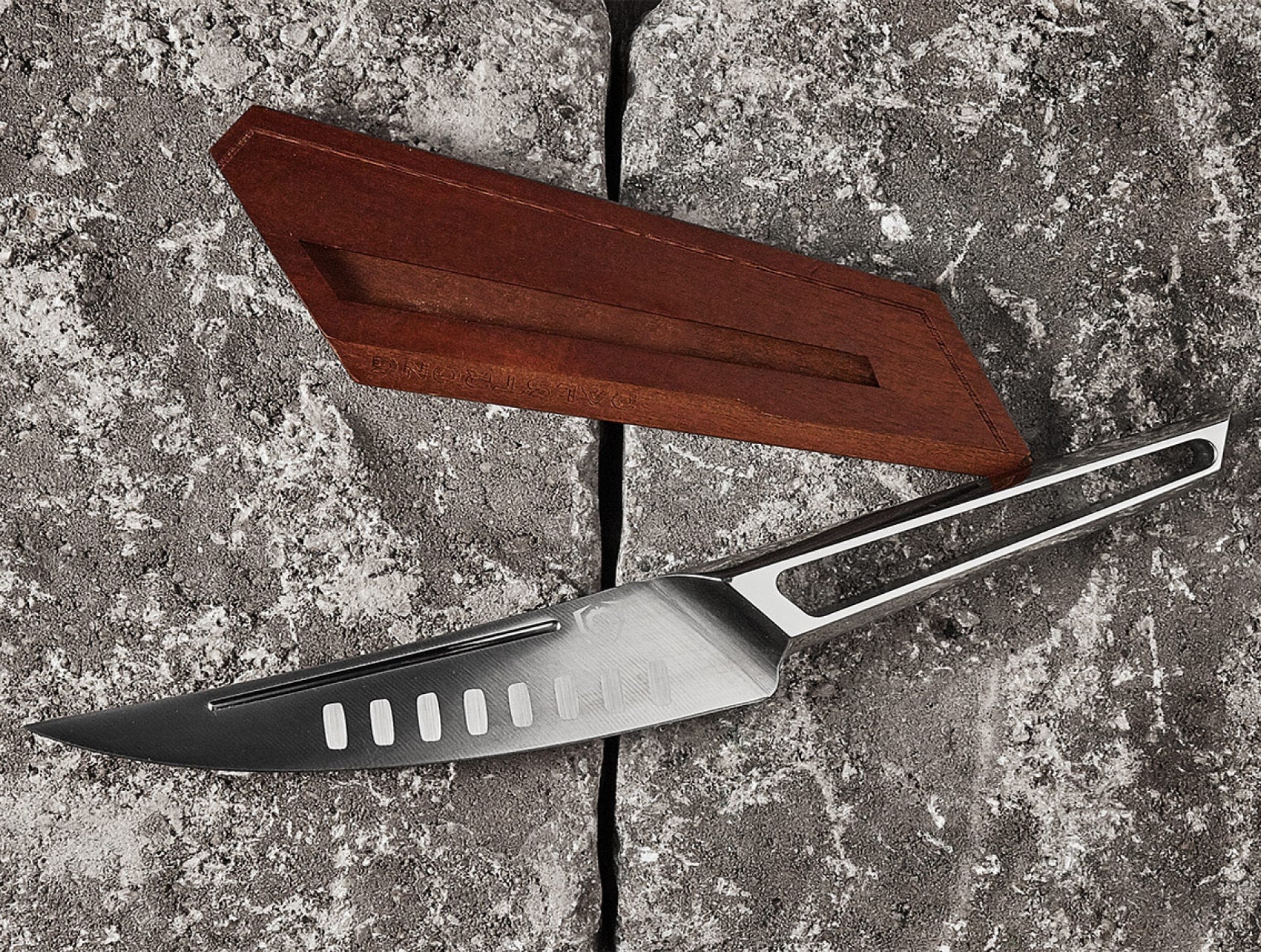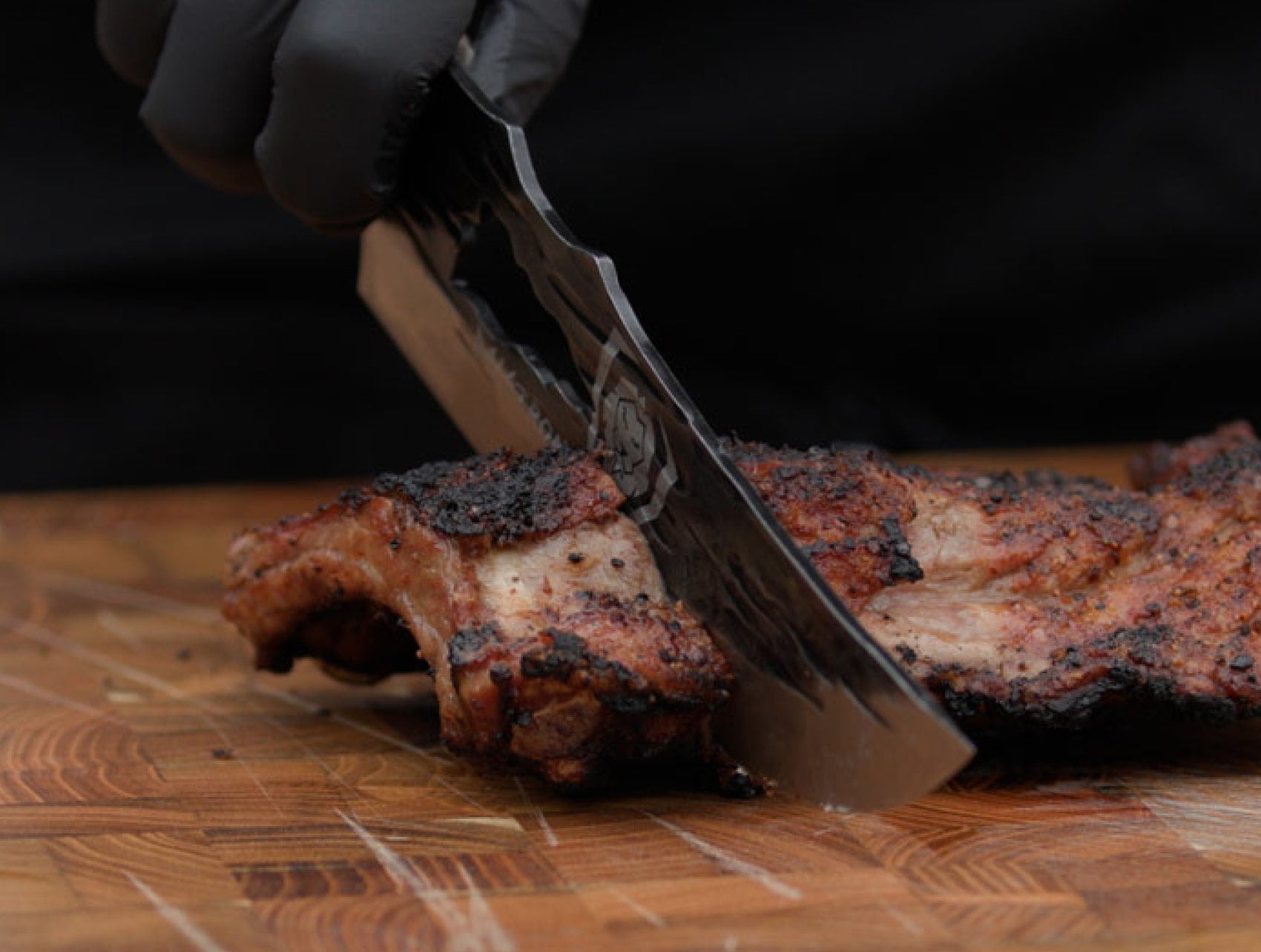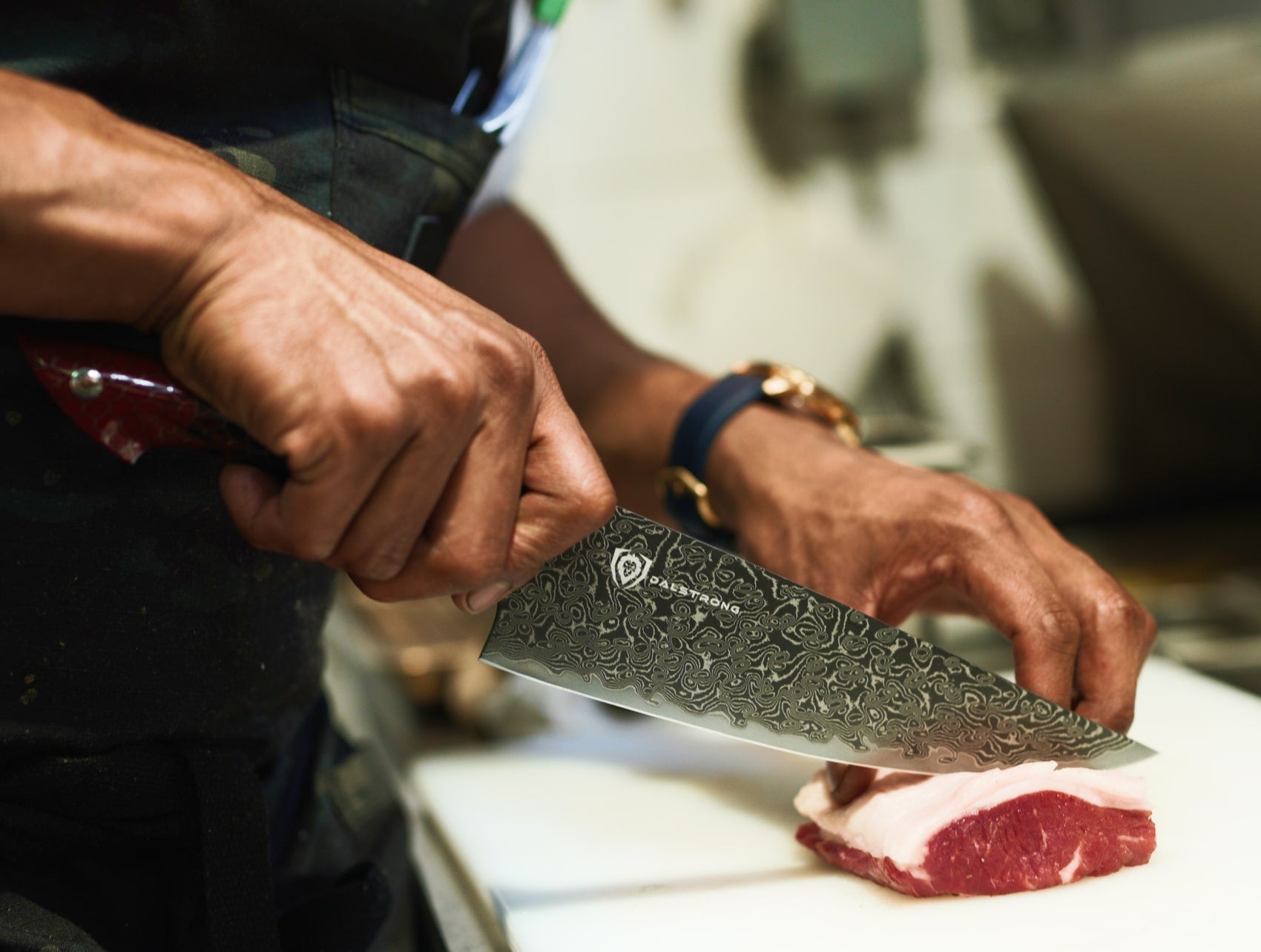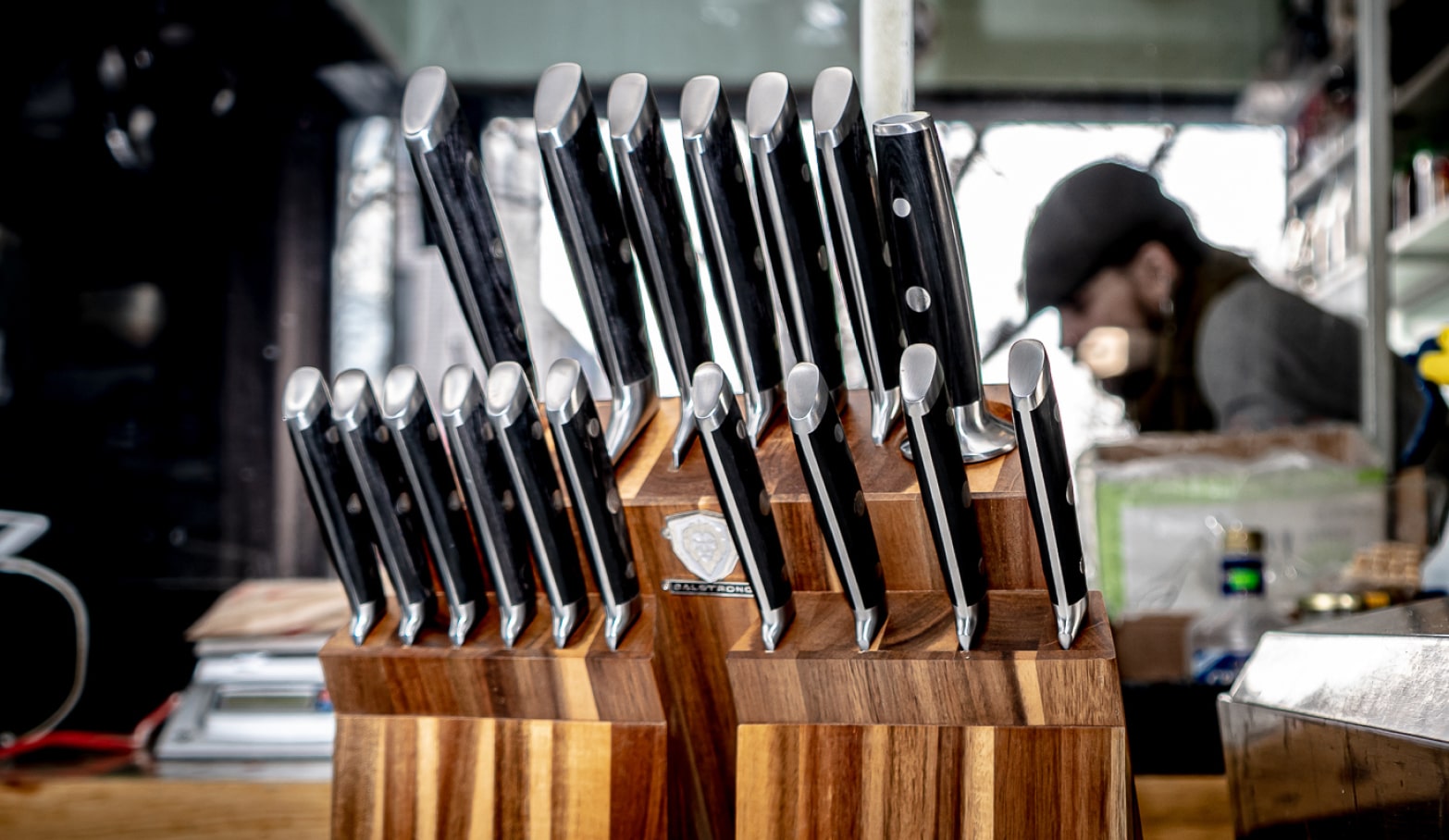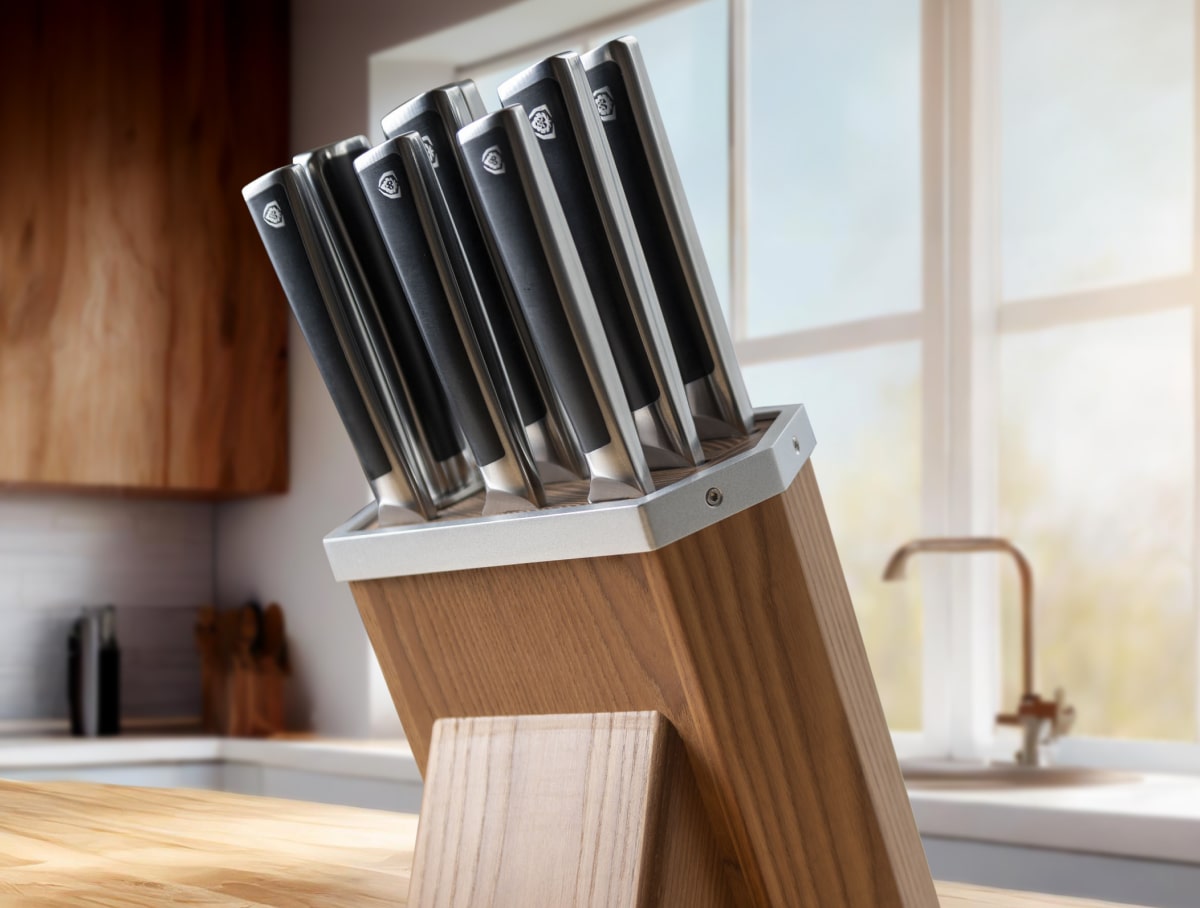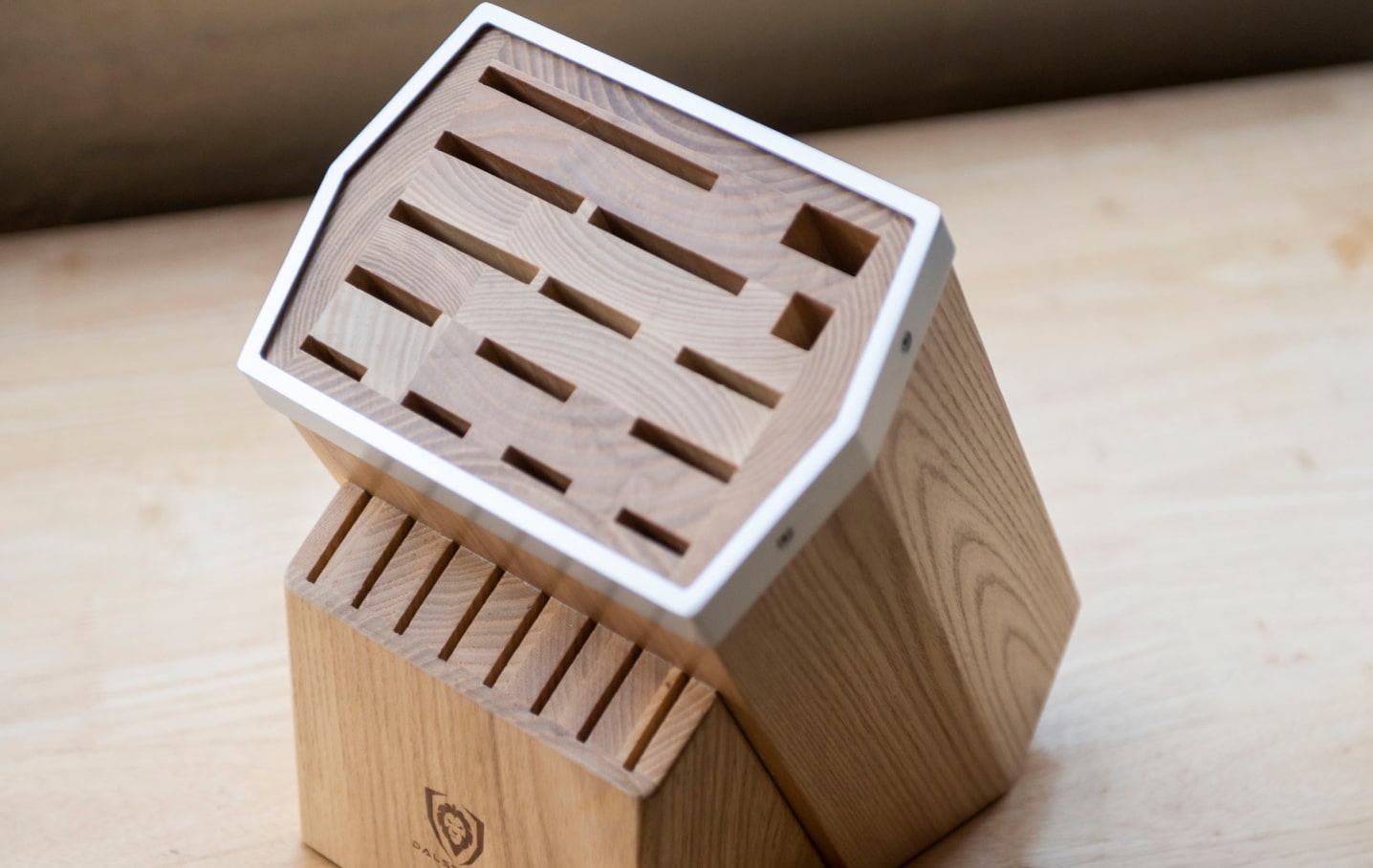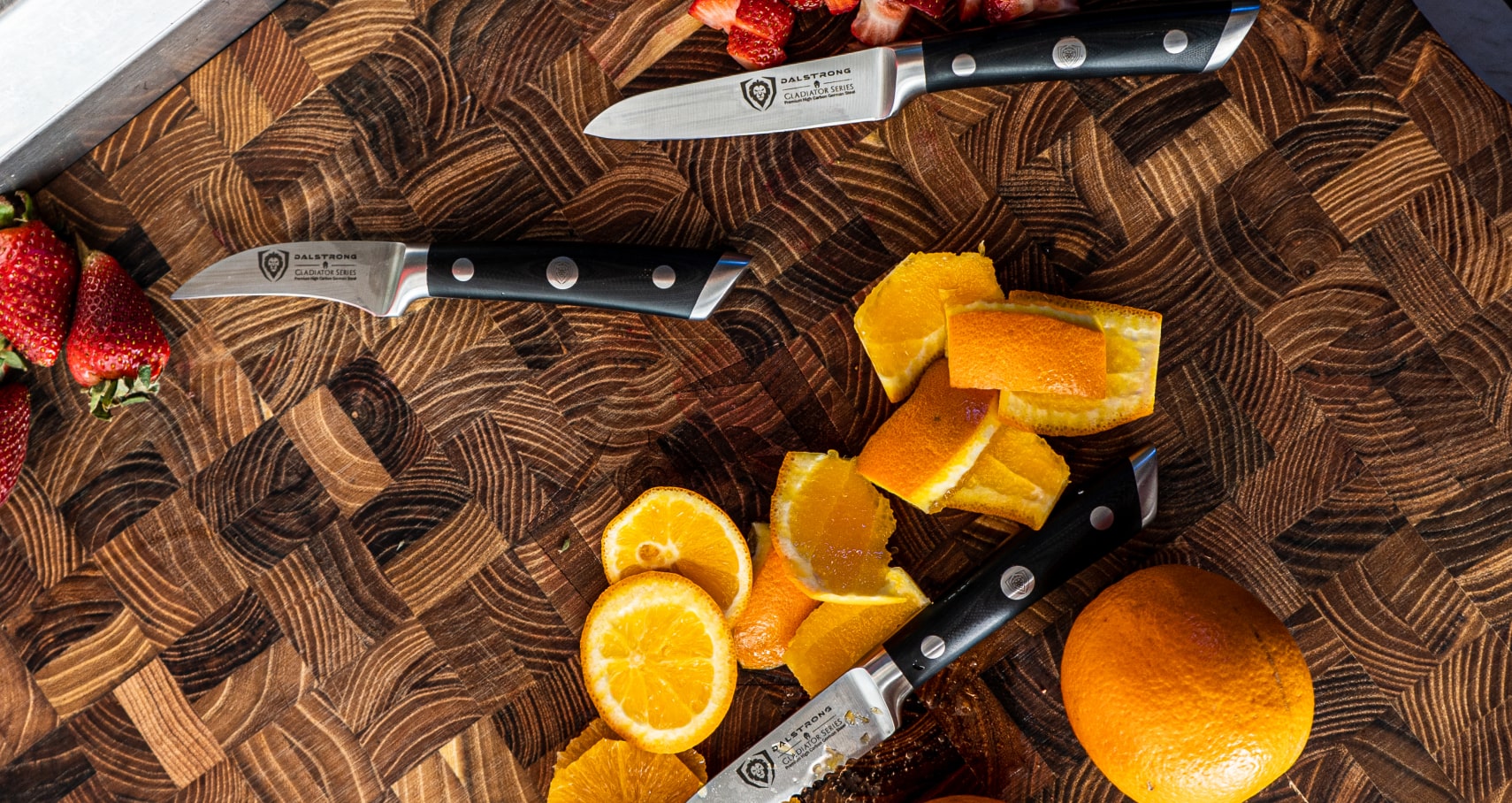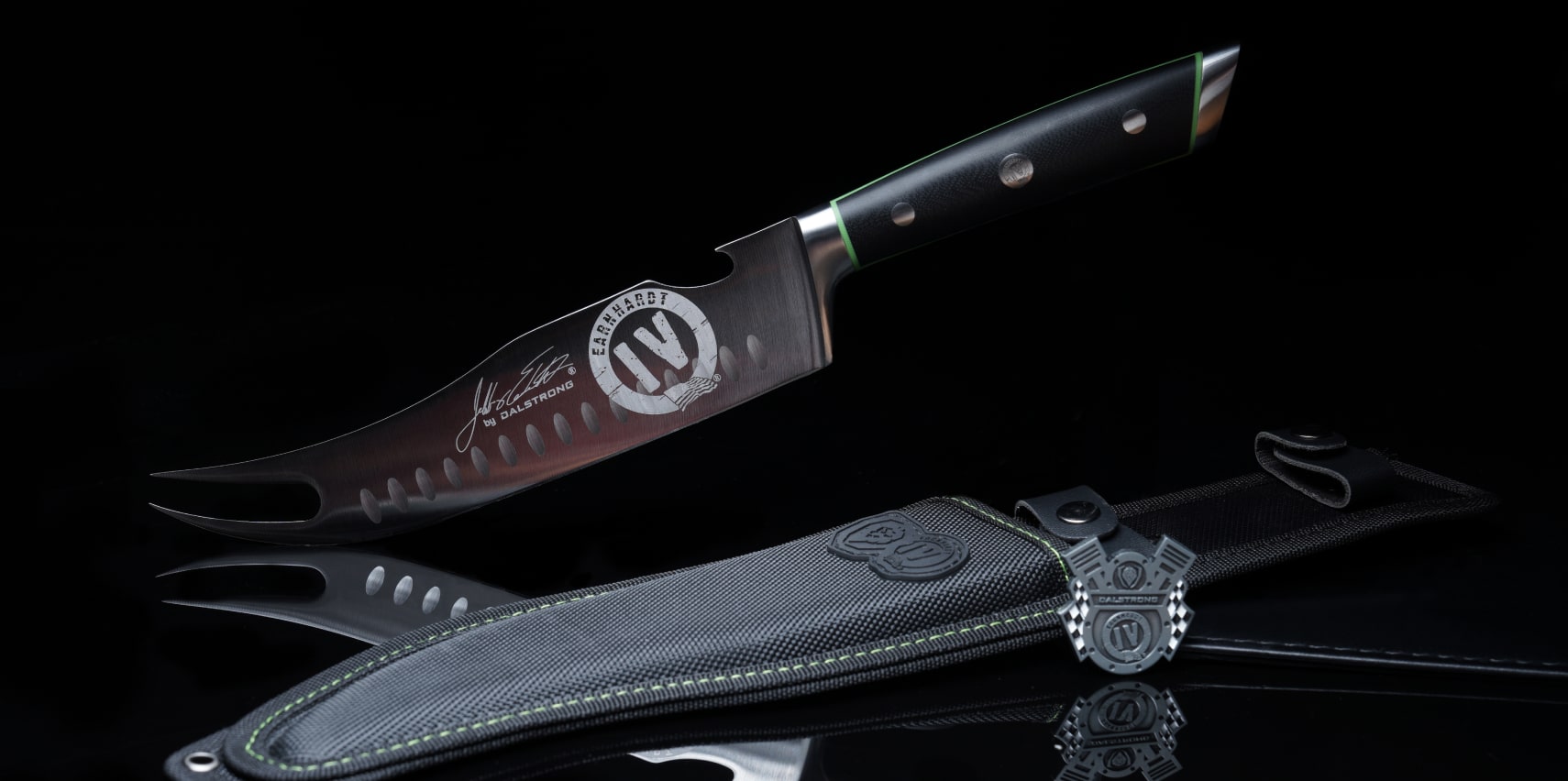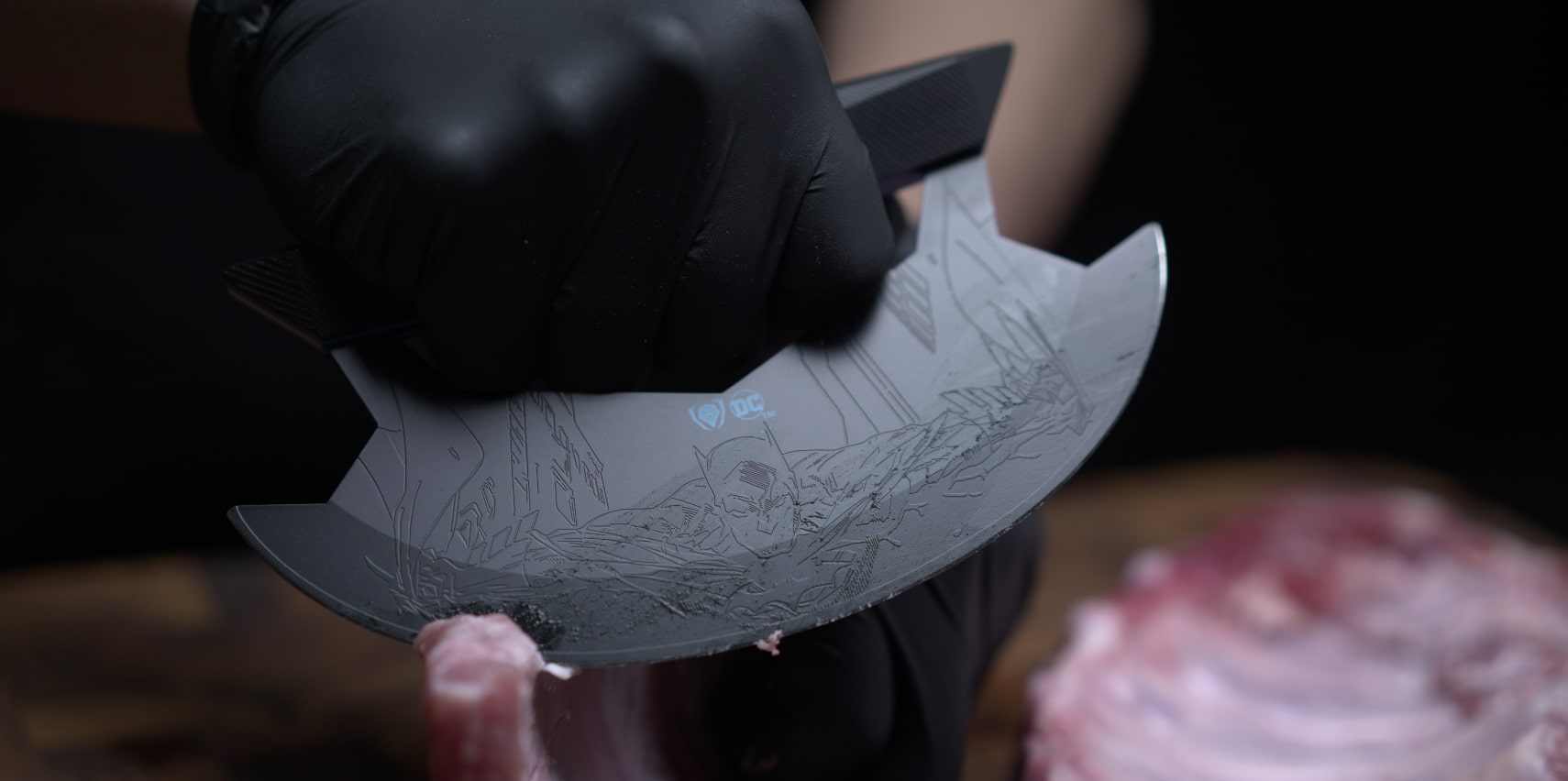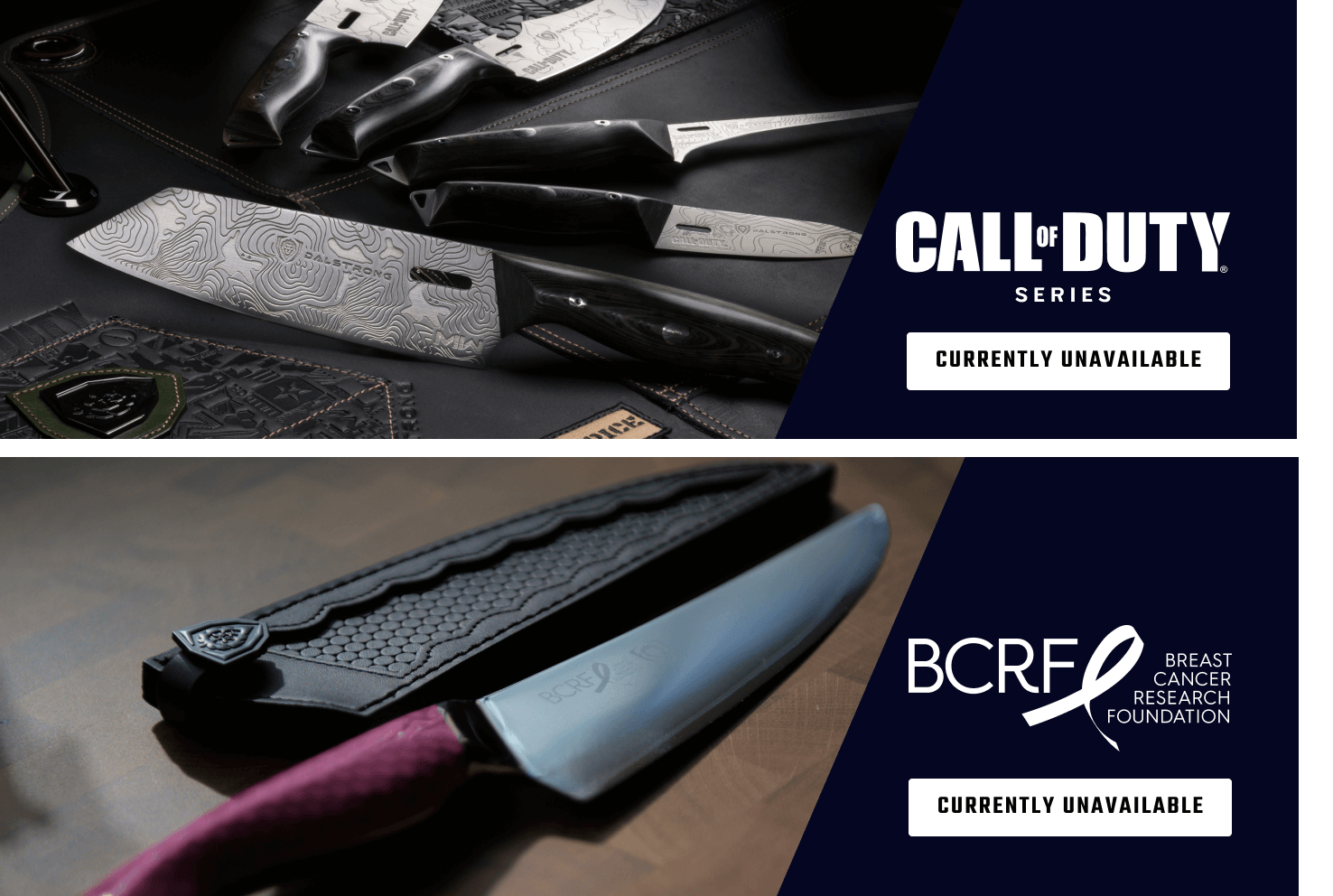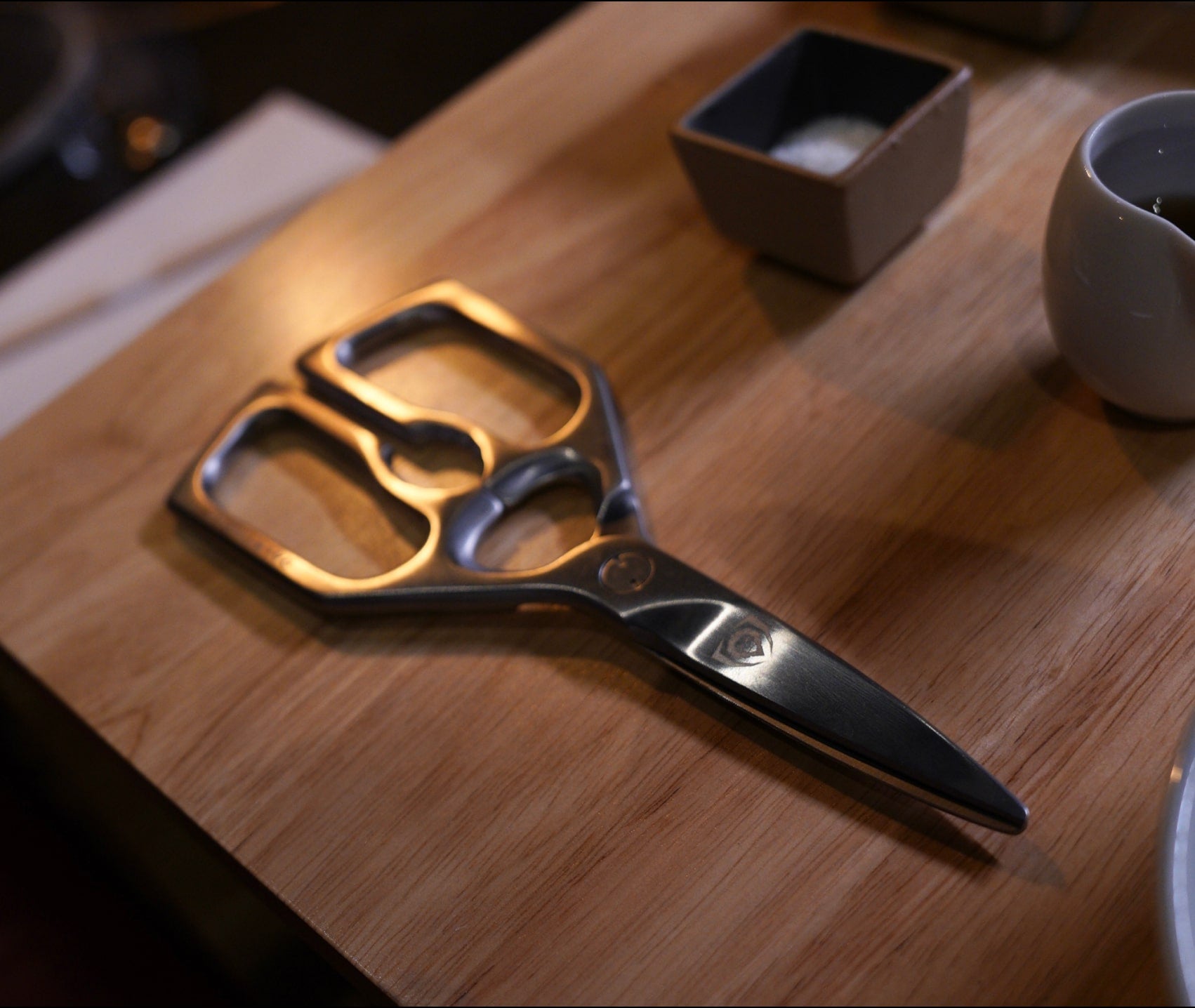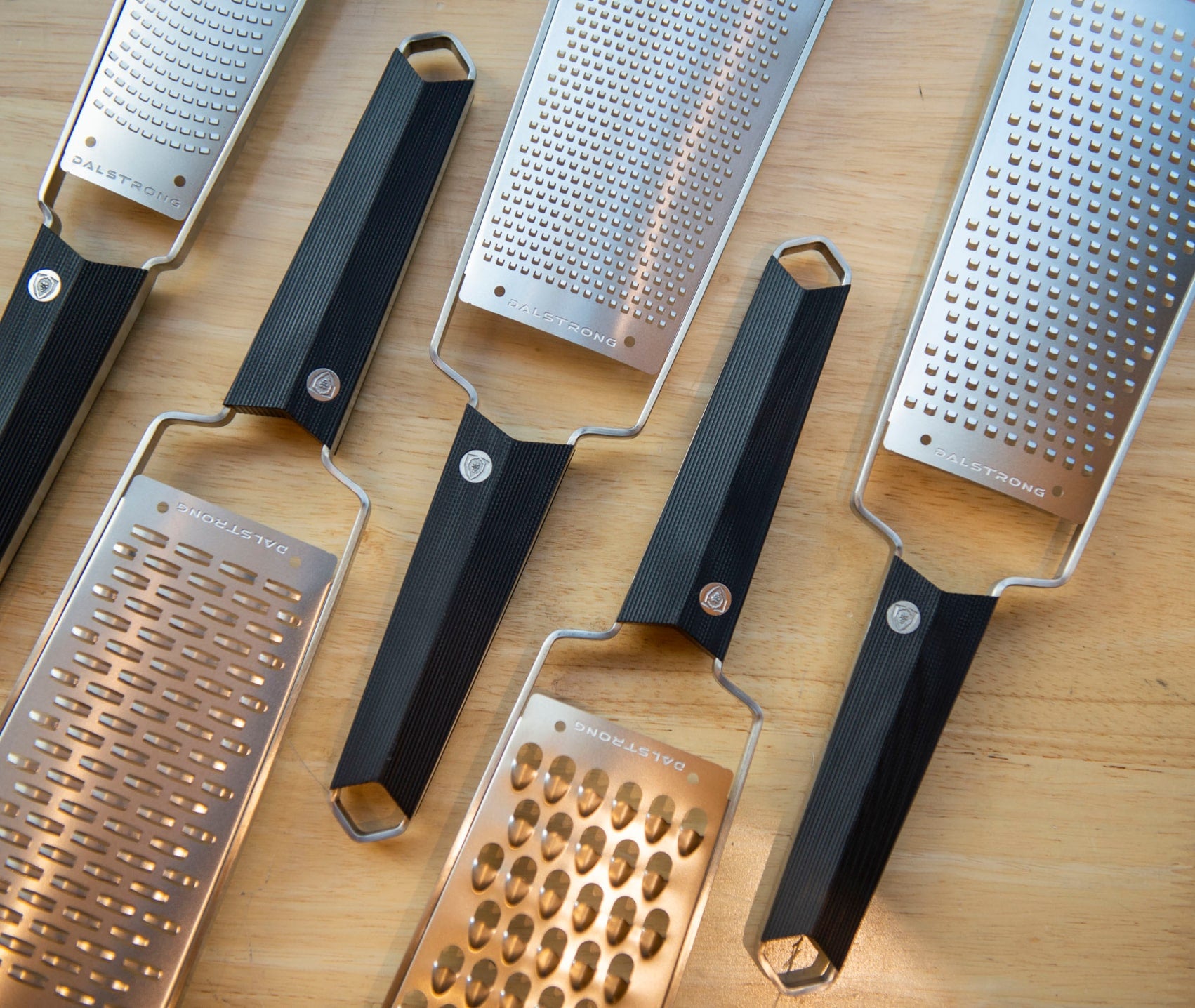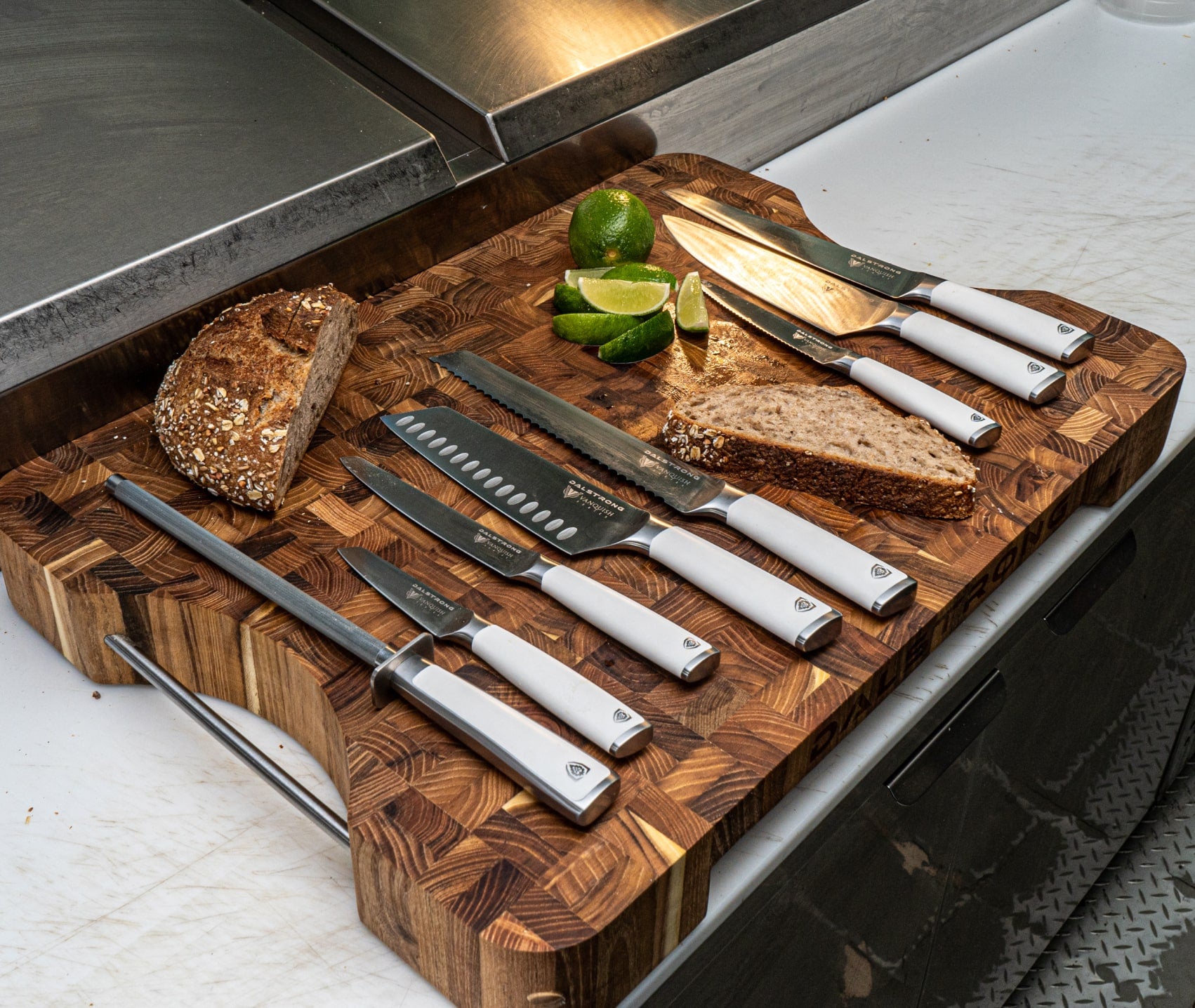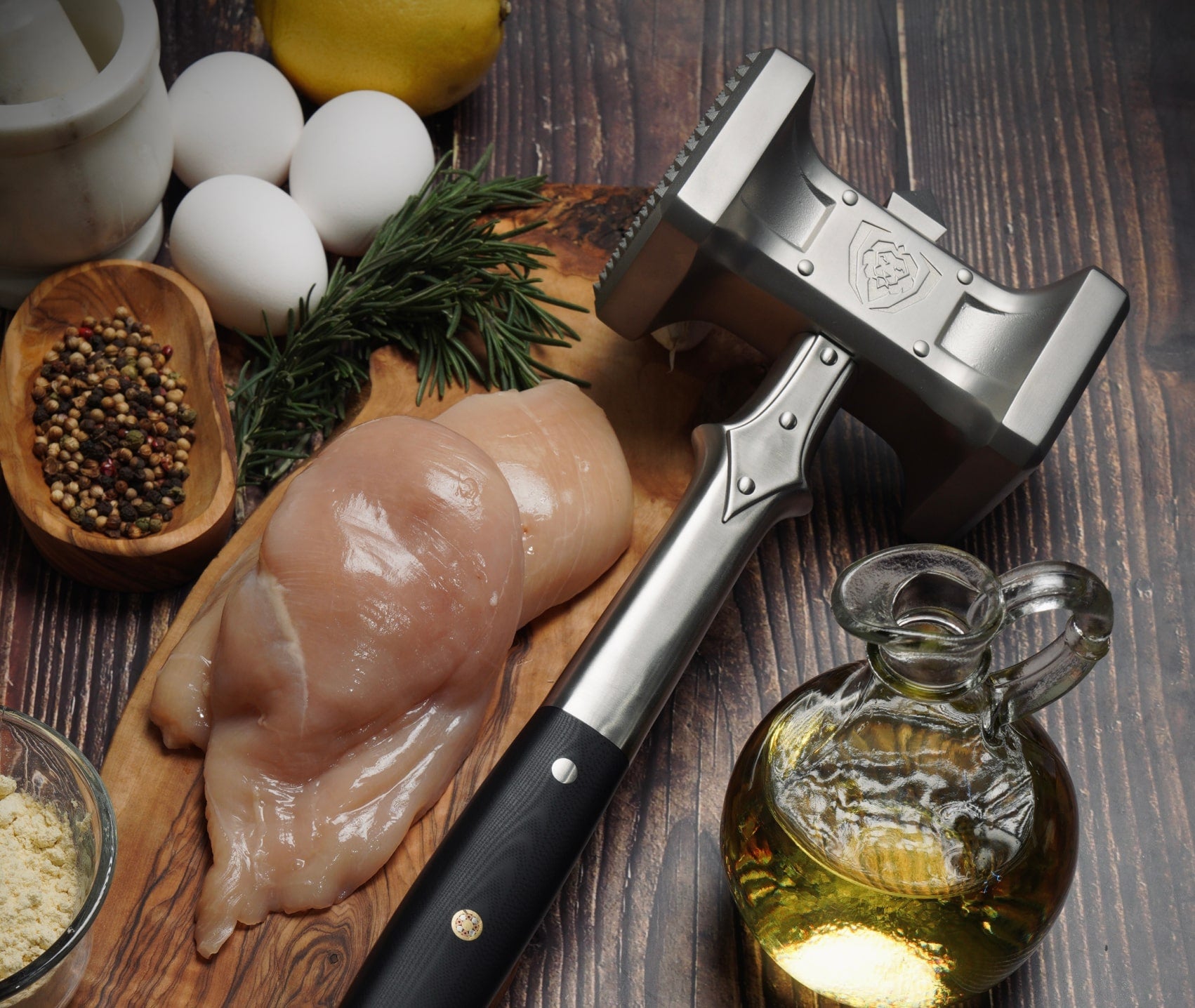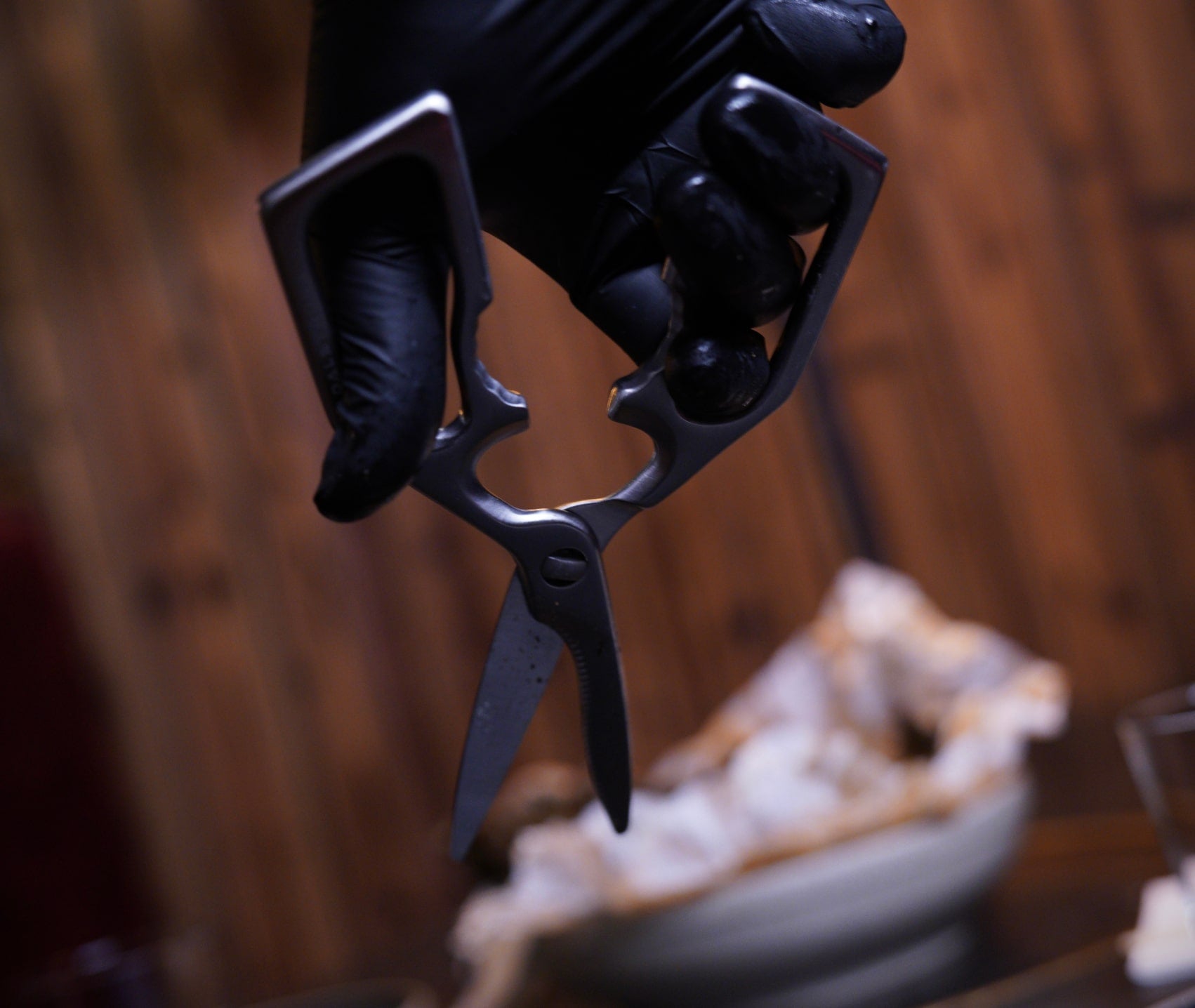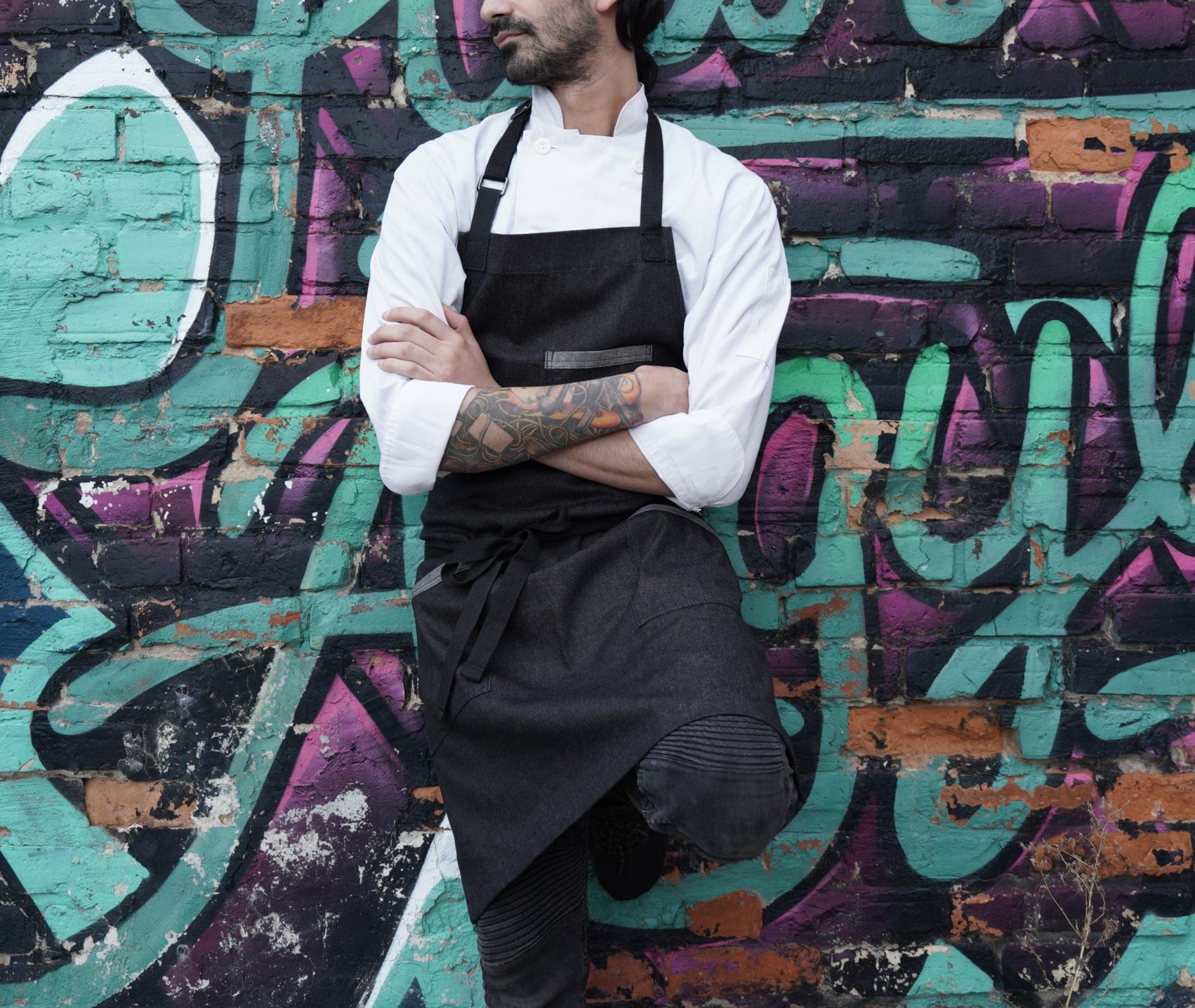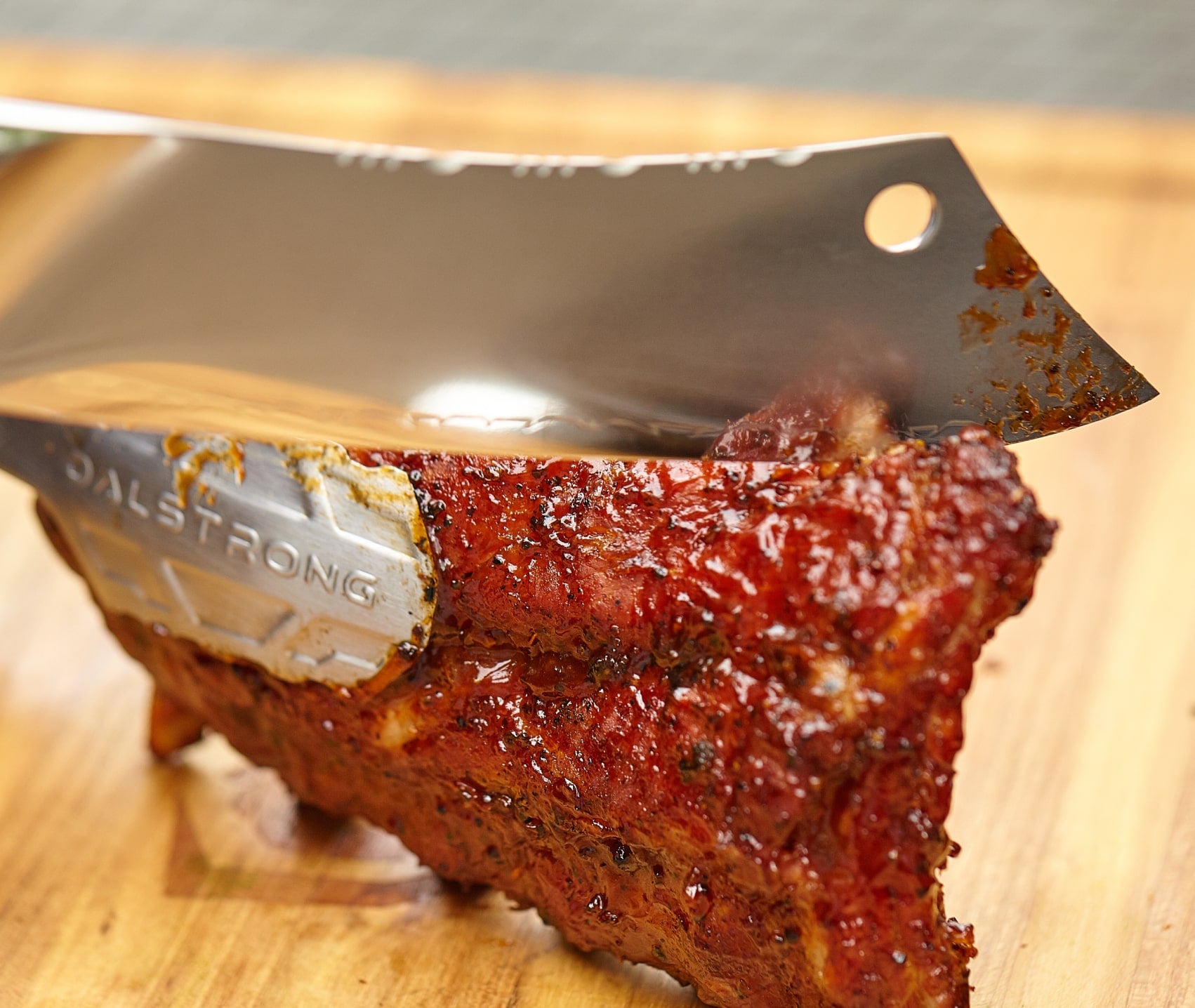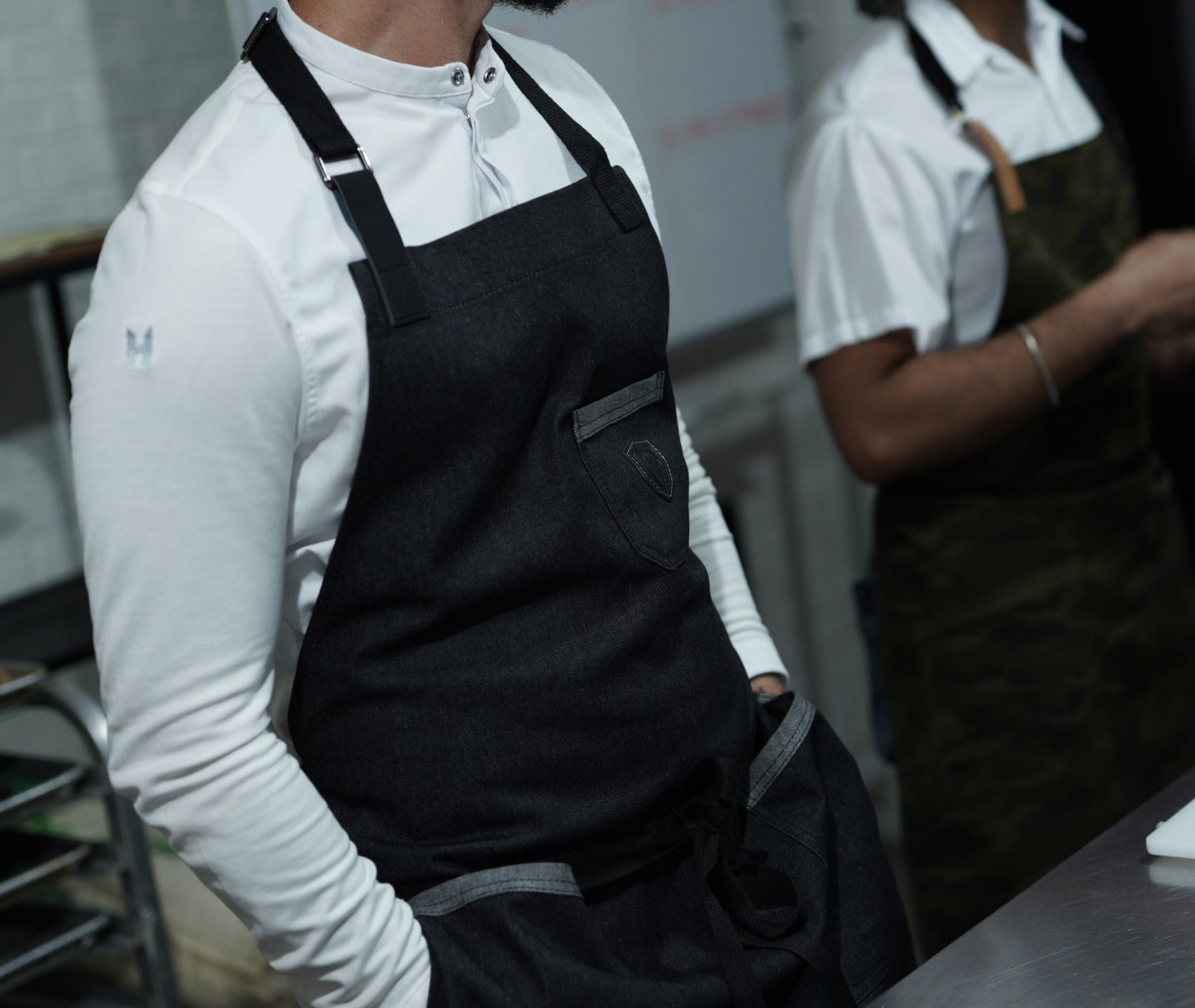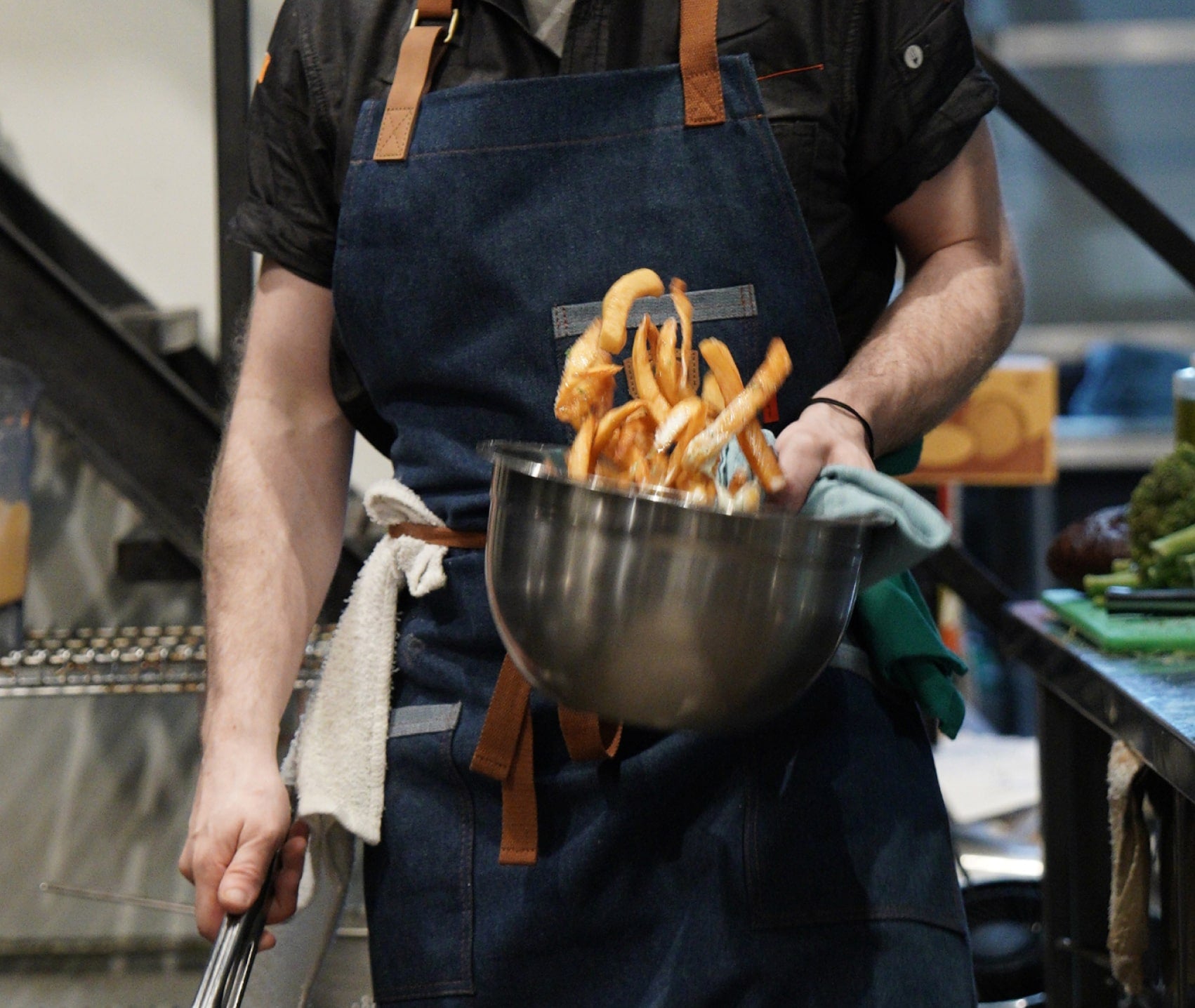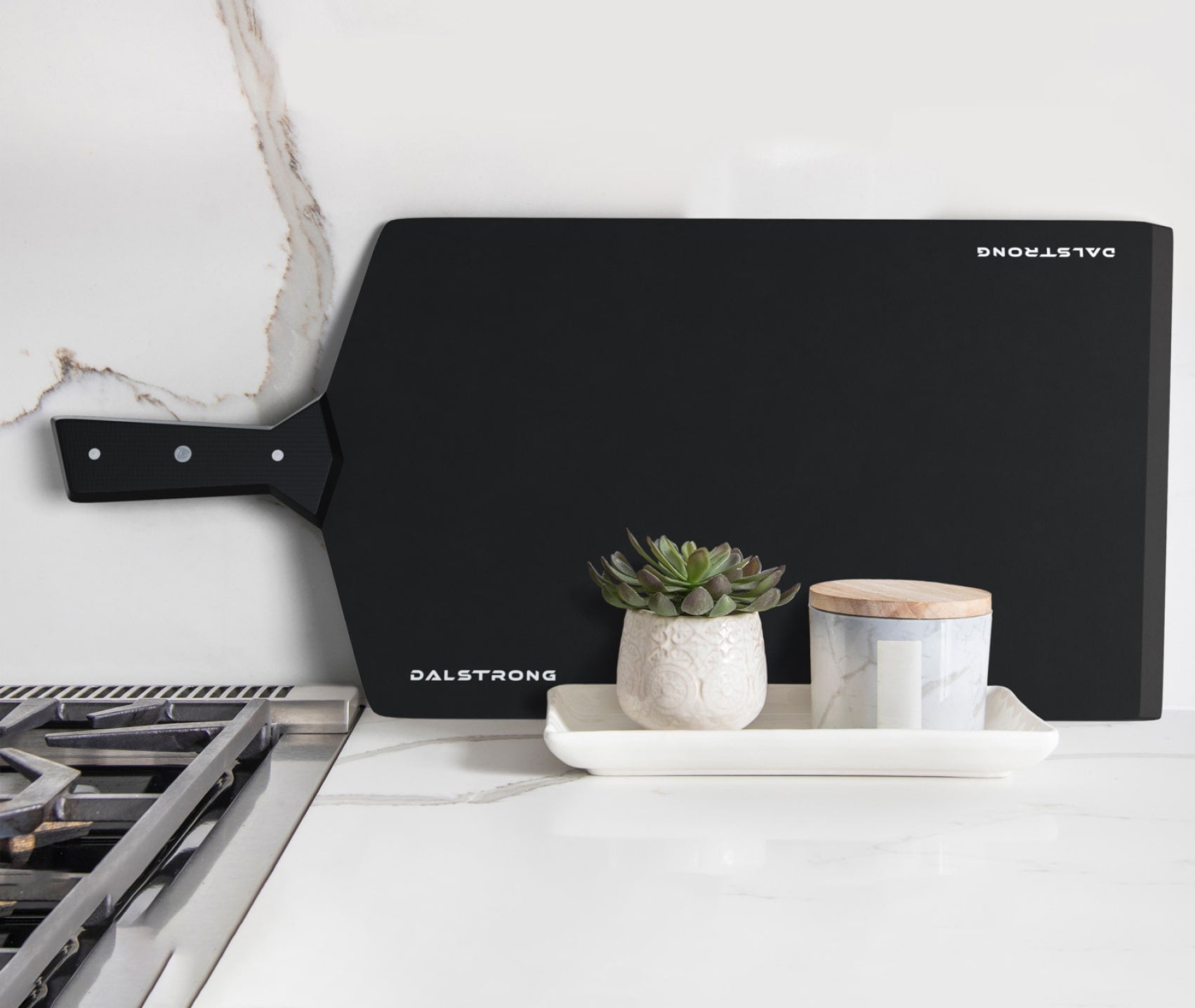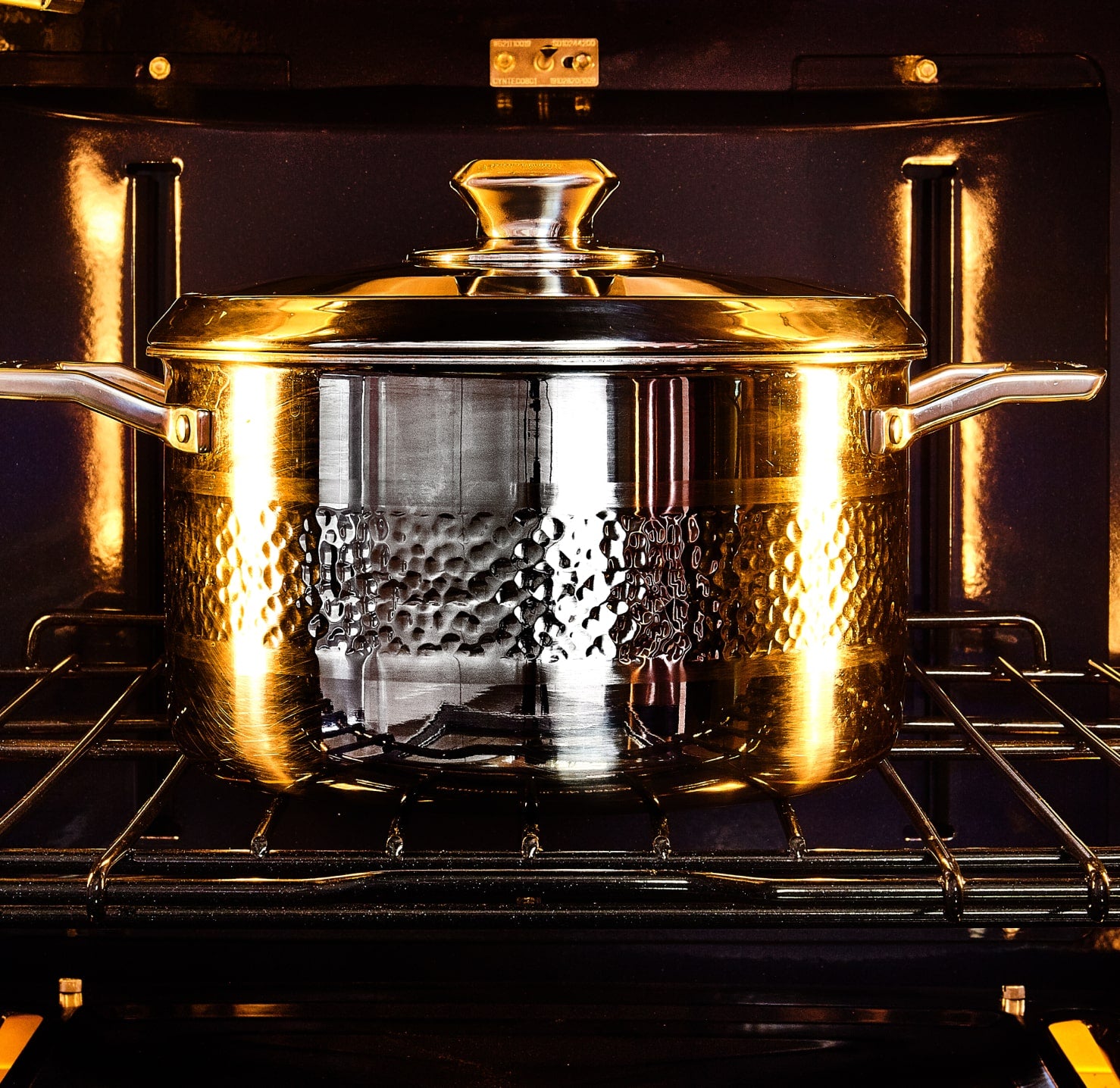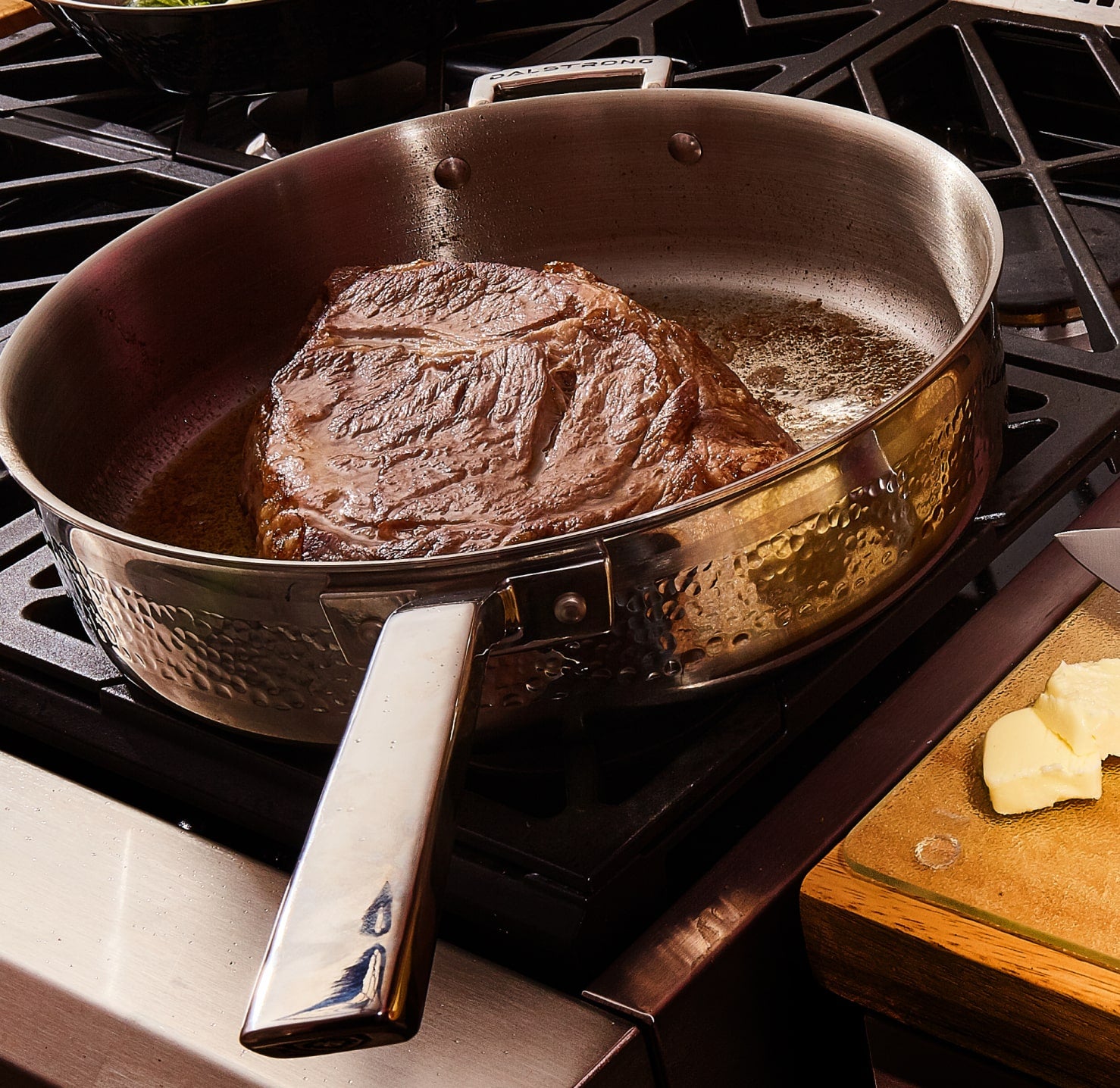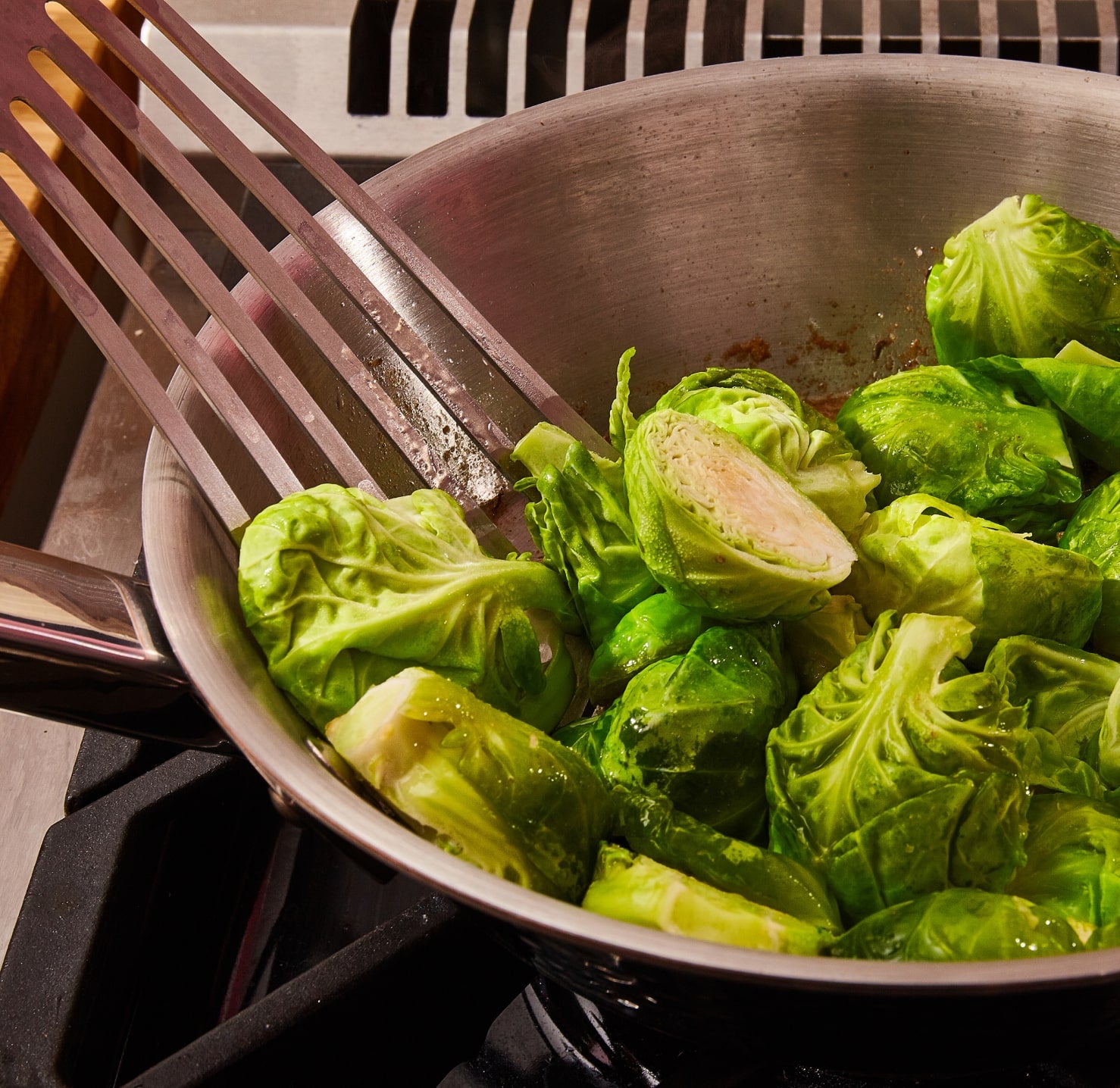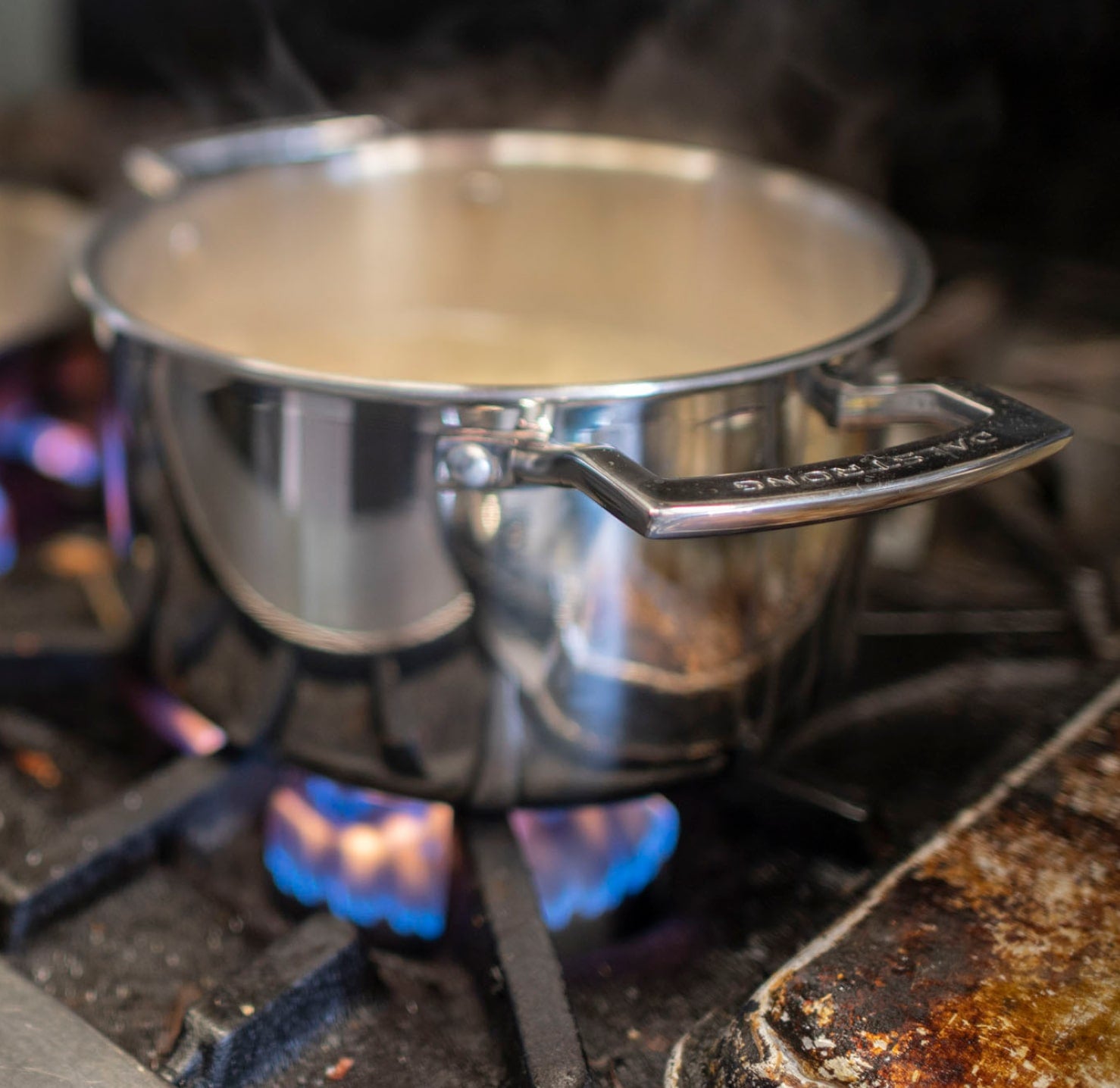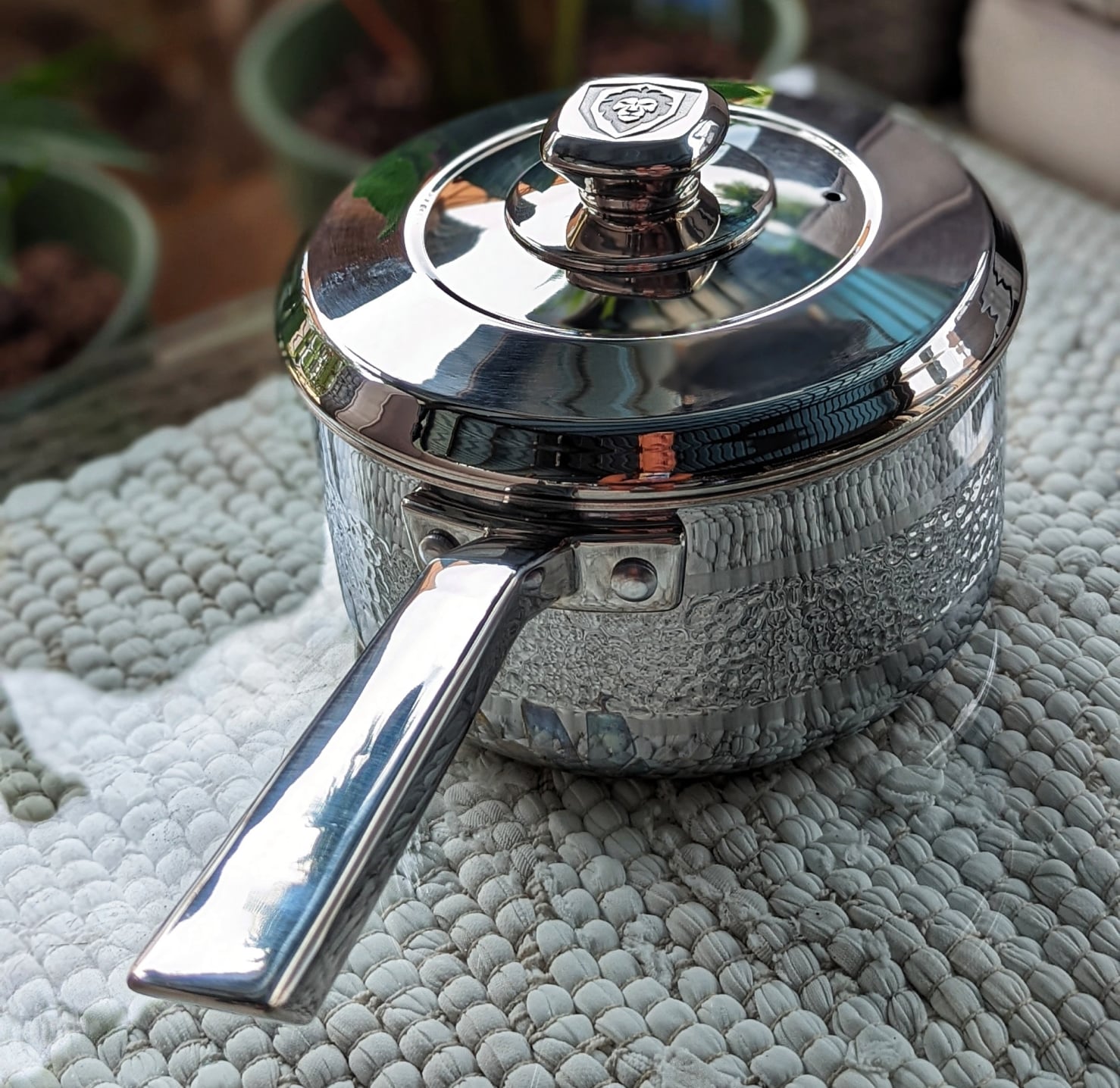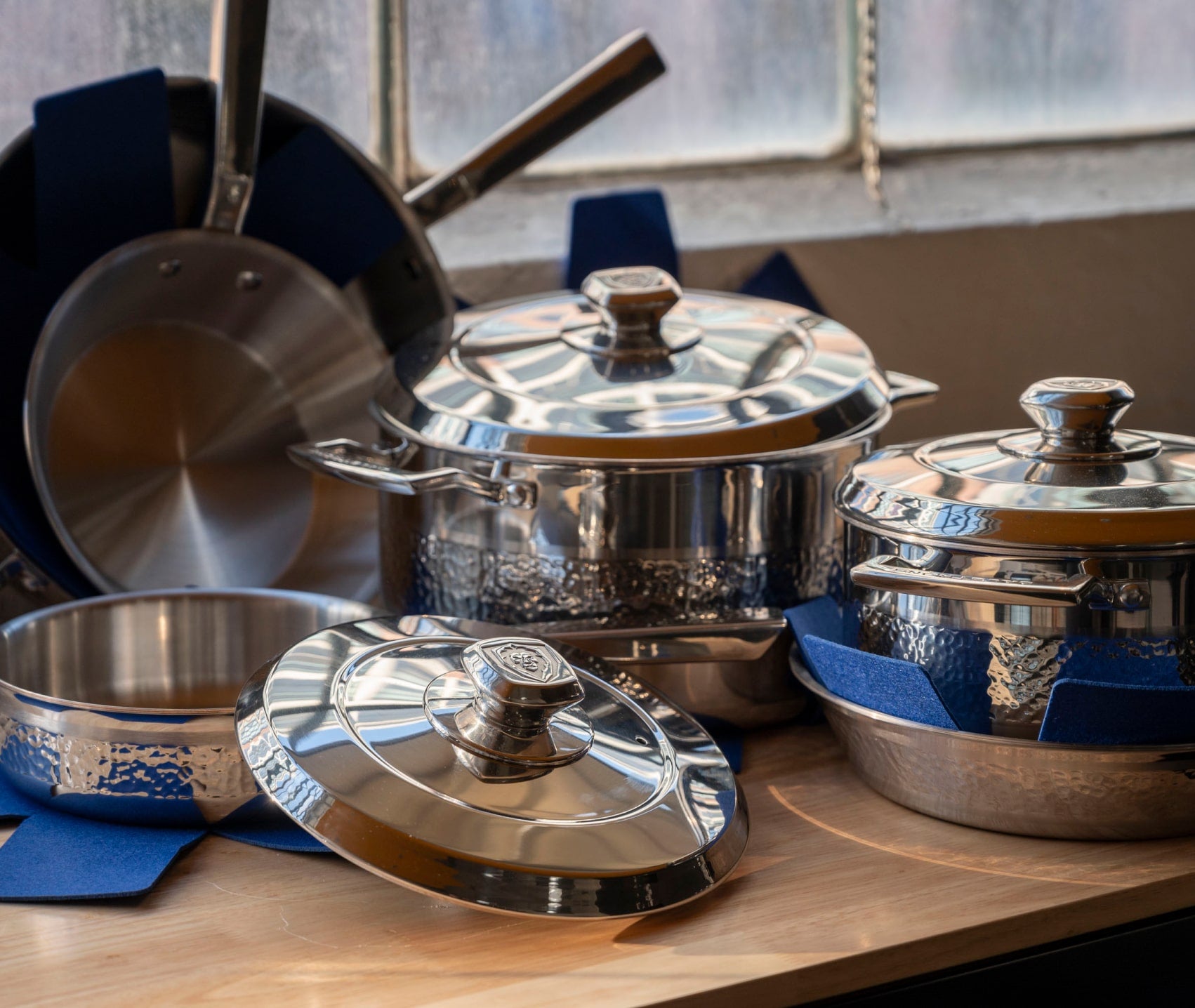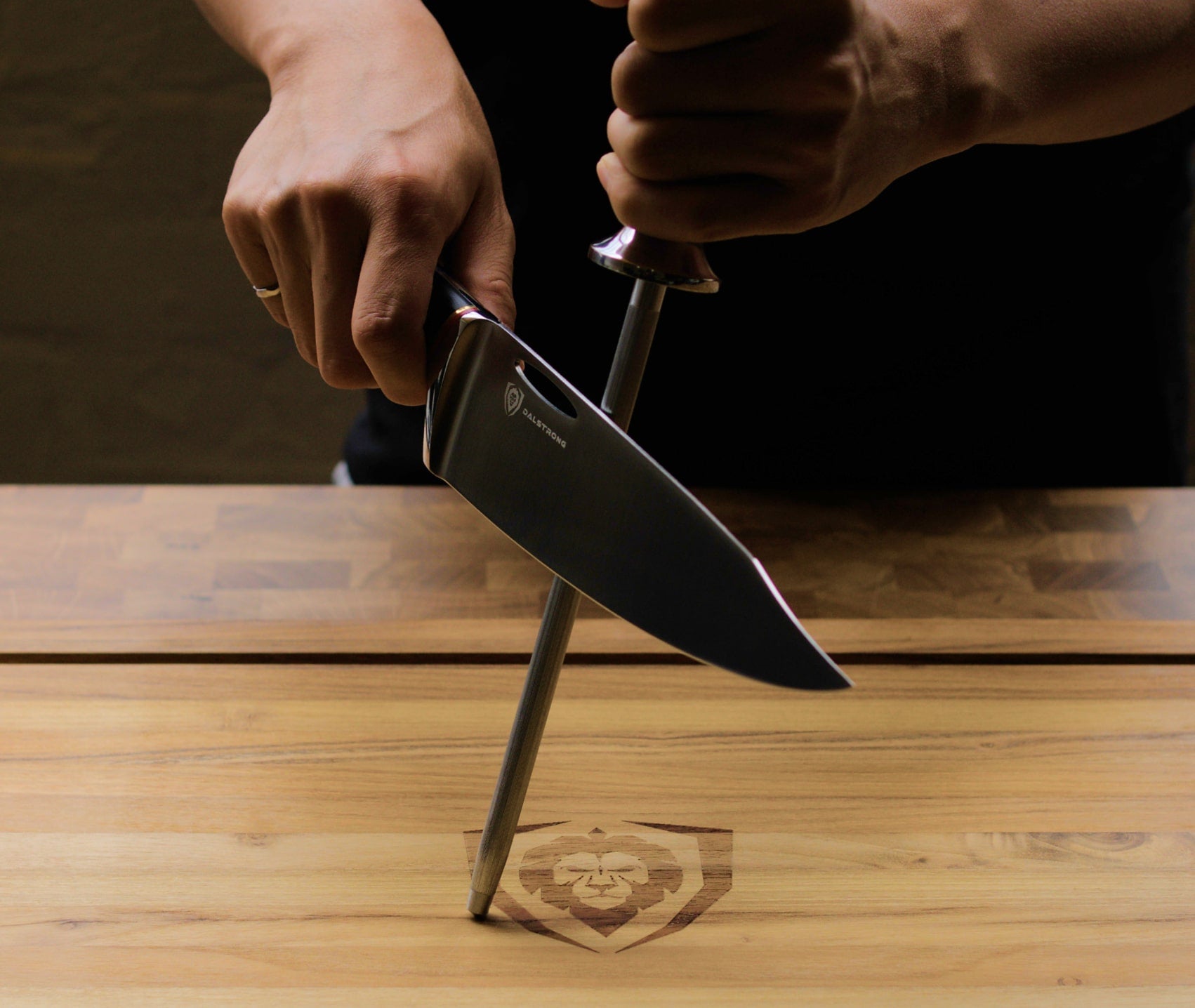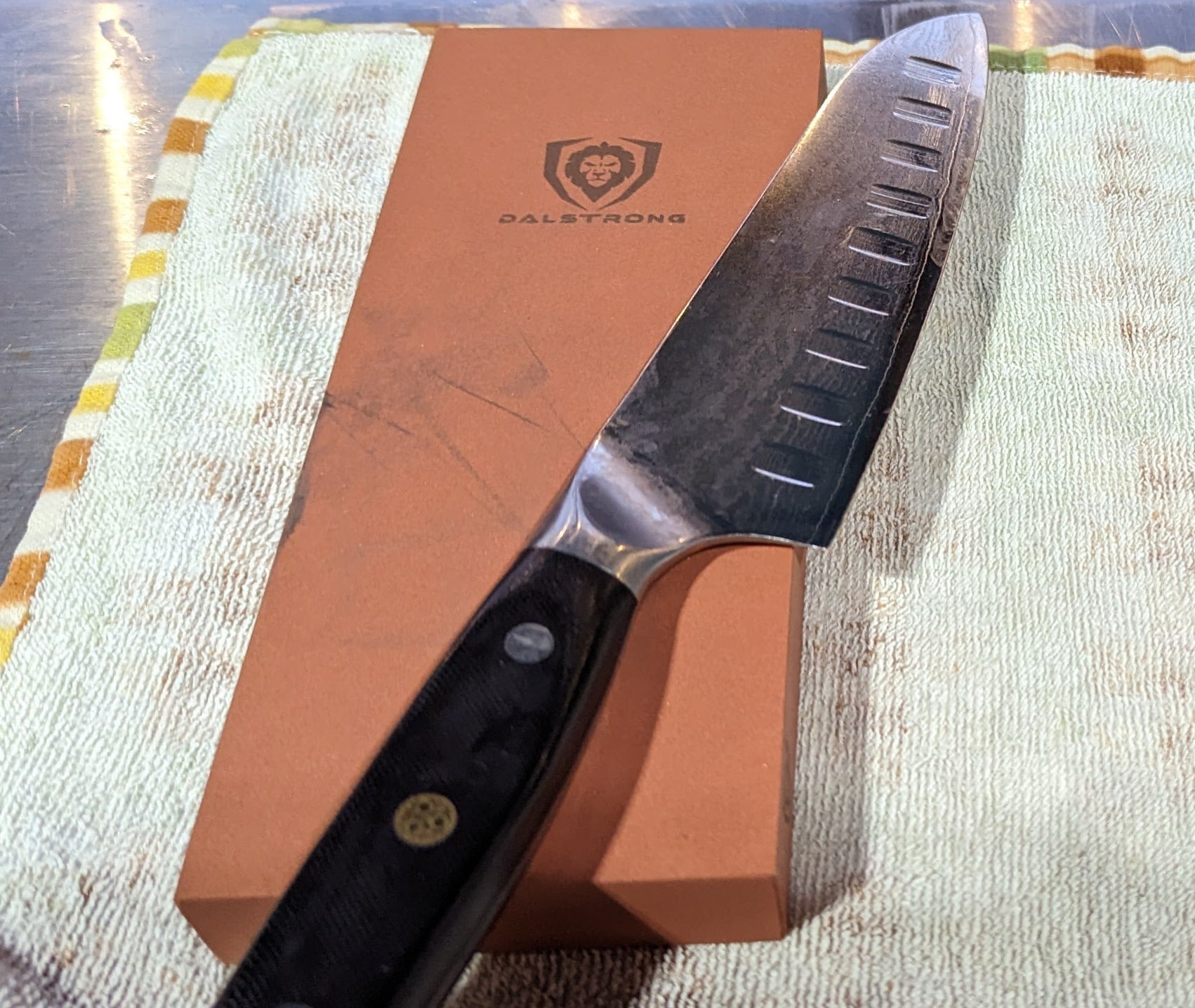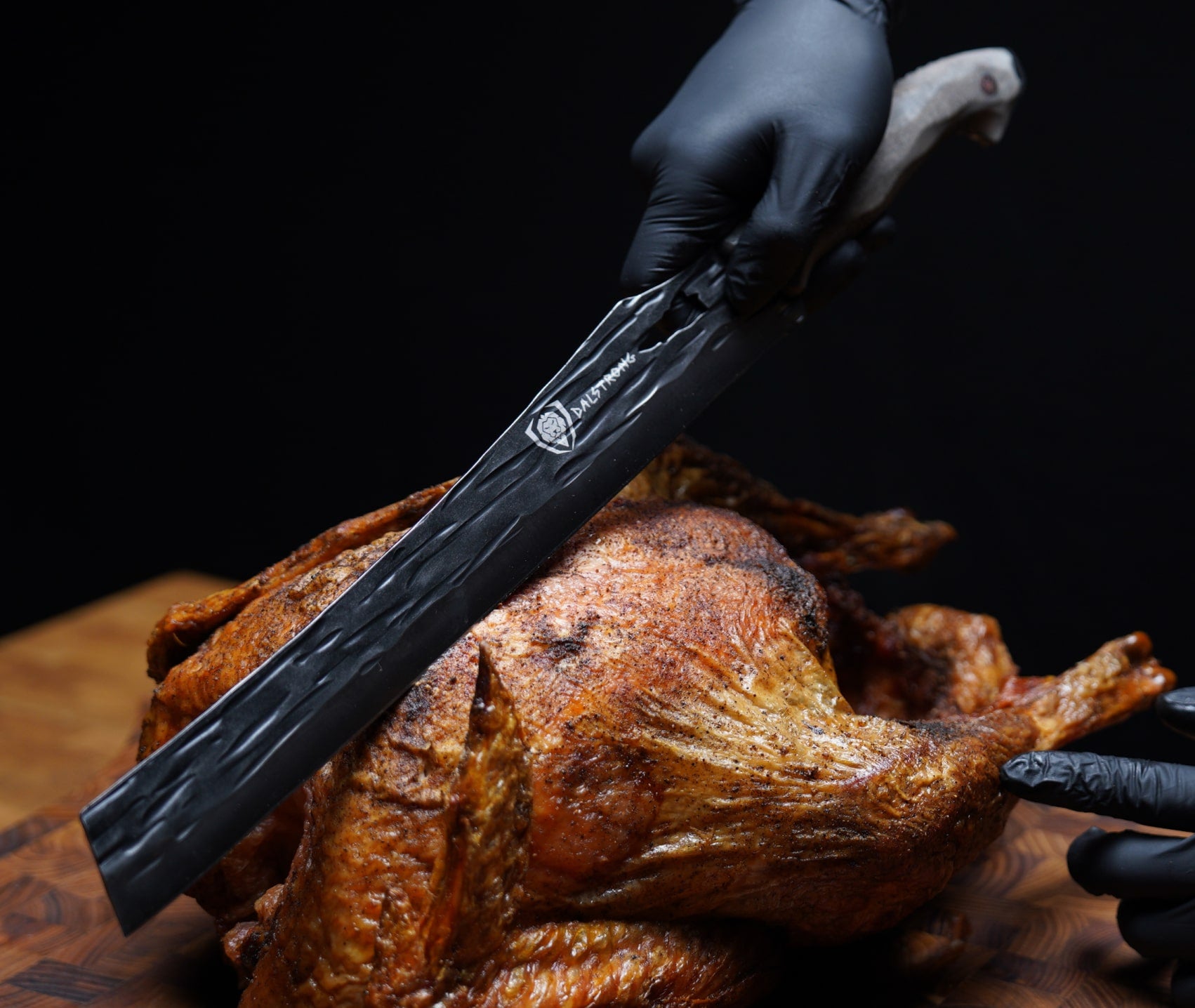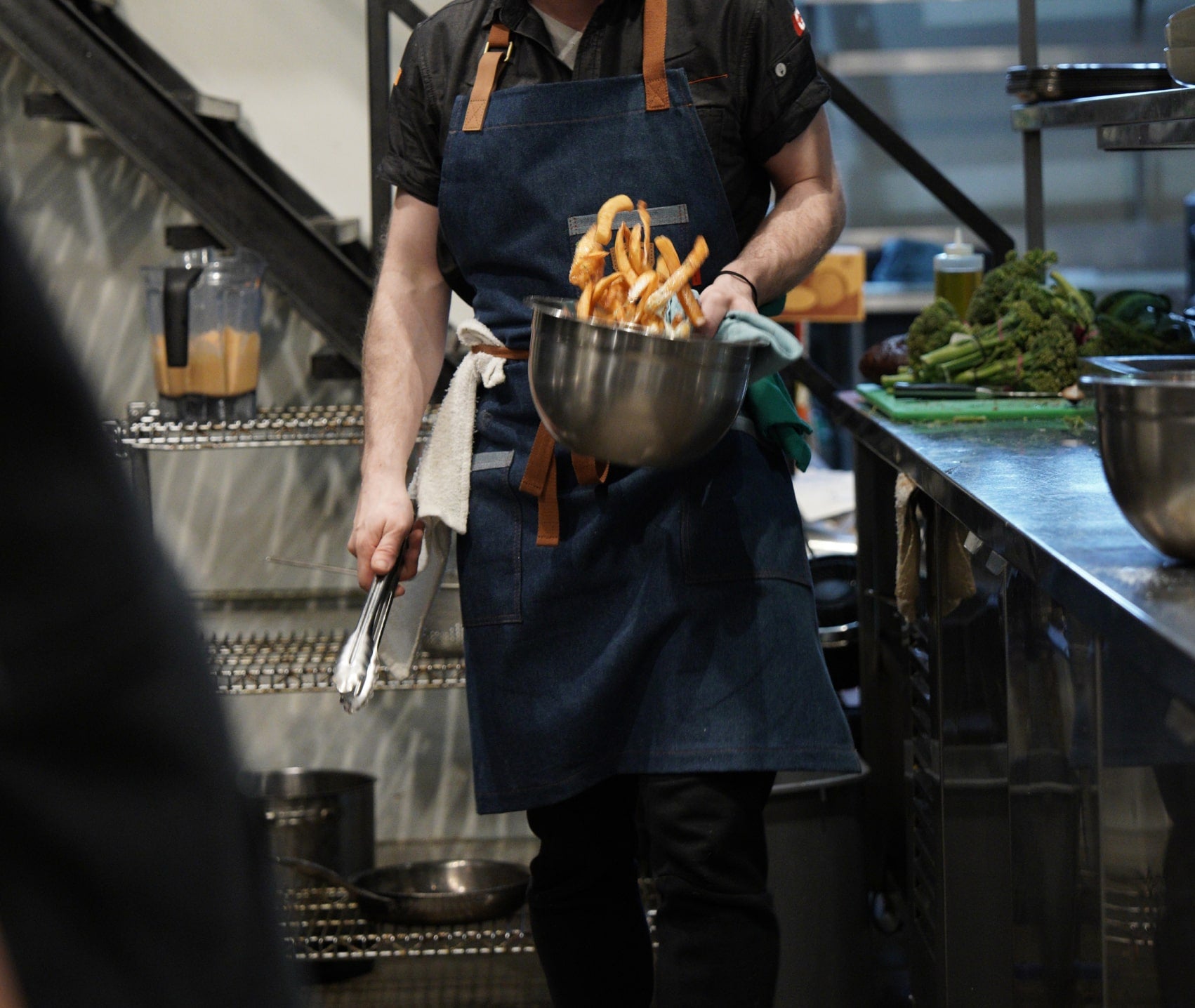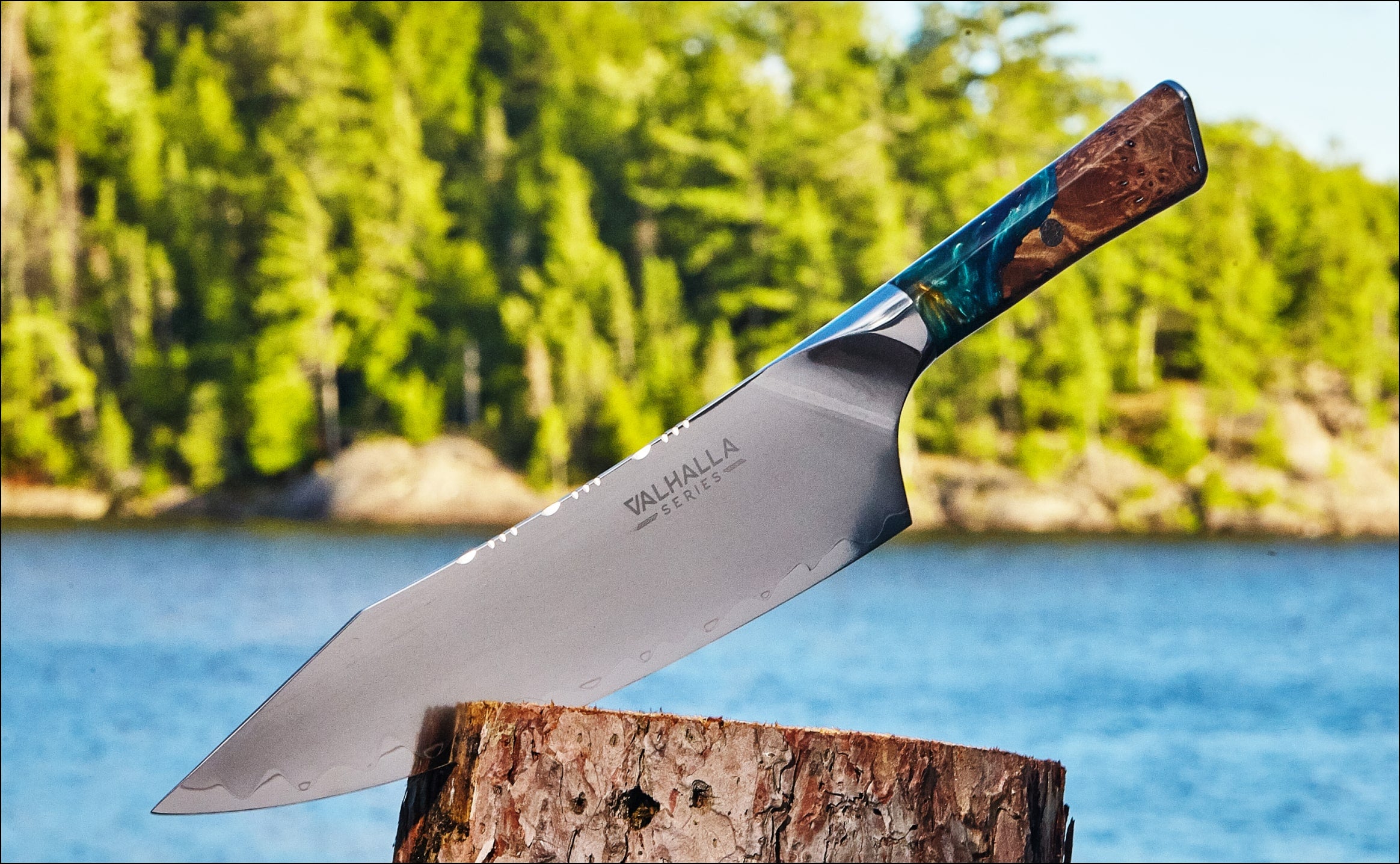How To Tell When Salmon Is Done
 Chef's Knife 7"Gladiator Series | NSF Certified | Dalstrong
Chef's Knife 7"Gladiator Series | NSF Certified | Dalstrong
Methods On How To Tell When Salmon Is Done
- Use a thermometer for checking the temperature
- Gently press down with your finger and confirm the color and texture
- Check with a cake tester
- The “butter knife method” (no knife skills needed!)
Cooking salmon is not only rewarding and relatively affordable: a salmon dish is also delicious and packed with key nutrients and health benefits that make it a wonderful food.
But while there’s nothing better than a juicy piece of fish, there’s also nothing worse than fish that is too dry and dull. Unfortunately, it’s easy to undercook salmon; and the line between well cooked salmon and overcooked salmon can be fine and confusing.
For instance, if you don’t like the final result of your in-house cooking experiment with your favorite cooking fish, chances are relatively high that you’re actually overcooking it. You see, overcooked salmon is usually opaque orange and super-firm all the way through. So when you overcook a salmon, the final result is a dry, chalky fish and, frankly, a sound waste of your hard-earned money.
Okay, but how can you know when the fish is cooked to an ideal medium, do you need an X-ray machine? Fortunately, you won’t need an X-ray machine, as there are numerous ways to know that your salmon is well-cooked before drying it out and making crumbles out of it.
Here’s how to tell when salmon is cooked perfectly and ready to be enjoyed; as well as some cooking tips for your next salmon recipe (and remember, practice makes perfect!).
 Chef's Knife 8" | Delta Wolf Series | Dalstrong
Chef's Knife 8" | Delta Wolf Series | Dalstrong
1. Easy Ways To Tell When Your Salmon Is Done
A meat thermometer or instant read thermometer
The internal temperature of cooked salmon should be between 125 and 130 degrees Fahrenheit. If you are into medium rare, then check the food thermometer for 120 degrees. This is the most accurate method to tell if salmon is ready, but an instant read thermometer or food thermometer is not always available. Never let the salmon go above 140 degrees, as it will be dry and… joyless.
The press-down
Gently press down the fillet using your fingers or a fork. If the flesh separates easily and the juices are translucent pink, you’re good to go. Again: press GENTLY. This is the easiest method but you should be delicate enough not to ruin the fish.
A cake tester
If you have a cake tester available in the kitchen, poke into the thickest part of the salmon fillet and wait a bit. Then touch the tester to your bottom lip, if it’s warm, the salmon is done (the temperature of cooked salmon is never cold).
A sharp knife
Very similar to the one above, you can also use a sharp knife to tell if salmon is cooked. Insert the knife into the thickest part of the fillet and check for juices and temperature. Be careful as a knife is tougher on the meat. This is called “the butter knife method”, although you can use another type of knife.
What does a cooked salmon look like?
When the salmon is cooked perfectly, it will show a translucent pink color in the center (too translucent means undercooked, too opaque means it’s overcooking), while the outside can vary according to the cooking method (white, beige or brown). Examine the color and texture: If the flesh looks bright orange, leave it for a few more minutes.
Needless to say, the temperature of cooked salmon is always on the warmer side.
The texture should also feel firm near the center and offer a little resistance when poked. If it jiggles, it probably needs a bit more cooking time.
2. Simple Salmon Cooking Methods
Grilling salmon
This method is quick and easy, and the salmon is left with that smoky grilled flavor we all love. To grill the salmon, leave the skin on, season to taste and coat with a bit of oil. Place the salmon on the previously heated grill and flip only once. Our detailed instructions for grilling salmon in the next point!
Baking salmon
Season the fillets with salt, pepper, herbs or spices to taste; place them skin-side down in a pan with a drizzle of olive oil or melted butter. The oven should be preheated to 425 degrees F. Bake for approximately 15 minutes (careful not to overcook it). When baking salmon, you don’t have to turn the fish.
Pan seared salmon
I personally love pan seared salmon: so crispy on the outside and so tender on the inside. Choose a large skillet or frying pan and preheat it over medium heat for a few minutes. Then increase the heat and bring the previously seasoned salmon pieces. Our recommendation: skin side up, 4 minutes on each side.
The good thing about this method is that the salmon is cooked without being touched too much. You’ll recognize that golden crust, typical of pan seared fish, when it’s ready. Serve with a garnish, bathed in a sauce or flavored with lemon or other citrus fruits.
Salmon en Papillote
Doesn’t this term sound fancy and exotic? Don’t you want to actually say the phrase “Hey! I’m making Salmon en Papillote for dinner”?
The recipe is not complicated at all. The fillets are baked in the oven, wrapped in parchment paper (although some even use aluminum foil). You can add a bed of sliced vegetables at the bottom and season to your liking. The secret here is to close the ends tightly so that the steam does not escape until the end. Bake at 400 degrees F for about 15 minutes, then remove and open the paper or foil to allow the steam to escape.
Smoked salmon
Smoked salmon is soft and somehow, pleasantly sticky. You can make it at home using a smoker, and you don’t even need to prepare the salmon beforehand to get a tender, flaky texture.
Preheat the smoker to 225 degrees Fahrenheit. Season the salmon to taste with salt and pepper and place on aluminum foil laid out on a baking sheet. Close the lid and cook until the internal temperature reaches 145°F (start checking after 30 minutes. Remember fish keeps cooking for several minutes while resting outside the smoker.
Pan fried salmon
Pan fried salmon is easy and takes little cooking time.
Fry the salmon with the skin side up first, cooking for several minutes (5 or 4). Turn carefully and fry the other side for around 4 minutes. Season with salt, pepper and lemon juice (some people like to use the “butter juice” in the pan).
First, generously season the salmon fillets with salt and pepper. Preheat the frying pan over medium-high heat with olive oil and butter until it bubbles. Then, carefully place the salmon fillets skin side down and fry for 3 minutes until they are crispy. Turn with a spatula, lower the heat and cook for another 3 minutes. Serve and garnish with a squeeze of lemon juice and the butter juice left in the pan.
3. Best Grilled Salmon Recipe
You can use two types of salmon for this recipe: wild salmon or farm raised salmon. Wild salmon has a slightly more intense flavor and is leaner. Farmed salmon has a milder taste and is more “buttery” as it contains more fat.
Ingredients:
- A piece of salmon (leave the skin!)
- Extra virgin olive oil (or use a neutral-flavored oil with a high smoke point)
- Salt and pepper
Instructions:
- Preheat the grill to medium heat.
- Coat the flesh side of the salmon generously (not the skin side) with the oil and seasonings of your choice. If you’re using a special marinade, which is optional but so delicious; soak the fillet for 20-30 minutes.
- When the grill is hot enough and the salmon is at room temperature, place the piece of salmon with the skin side facing down. Only put the salmon in when the grill is smoking hot.
- Cook on that side for 6-8 minutes. The idea is to cook most of the salmon with the skin facing down.
- Flip once. The skin side should be brown and release easily when you flip it.
- Cook on the second side for 2-4 minutes for medium rare.
- Use your preferred method to check for doneness. If you are using a thermometer, Take the fish out of the grill when the temperature is 125°-130°F, and then let it rest for a few minutes before serving (the fish will continue to cook during this time).
- Carefully peel the skin off.
- Serve with lemon wedges and bon appétit!
4. Seasonings Ideas For Grilled Salmon
- Citrus and aromatic herbs: Fresh dill, finely chopped parsley, lemon juice, lime juice, orange juice (you can actually use one fruit, two, all of them, or other fruits completely. Citrus fruits work better though), olive oil, soy sauce, salt and pepper. Mix well and marinate for 30 minutes.
- Lemon garlic butter: melted butter, chopped fresh garlic, lemon juice, black and white pepper, salt. Quick, simple and delicious!
- Sweet and smoky rub: Mix brown sugar, lemon zest, lime zest, dried basil, garlic powder, smoked paprika, red pepper flakes, salt and pepper in a bowl and rub the salmon generously before grilling.
- Cajun seasoning: This cajun blend works great with salmon and it also adds a touch of color to make your fillet more appetizing: smoked paprika, cayenne pepper, cumin, dried onion, dried thyme, dried oregano, dried basil, crushed garlic, sea salt and ground black pepper. Mix all the dry ingredients and add the garlic at the very end!
- Italian seasoning for salmon: Italian spices really enhance the taste of salmon and bring out its different aromas: dried basil, dried oregano, dried thyme, dried rosemary, dried parsley, garlic powder, dried dill, dried, red chili flakes, salt and pepper to taste.
5. Nutritional Facts About Salmon
|
Salmon Nutritional Value (Estimated values per serving:100 g wild salmon) |
|
|
Calories |
135 kcal |
|
Fat |
5-6 g |
|
Protein |
25 g |
|
Cholesterol |
40-50 mg |
|
Sodium |
180-200 mg |
|
Potassium |
50 mg |
|
Carbohydrates |
0 g |
|
Calcium |
10mg |
|
Iron |
0.3-0.5 mg |
6. Best Knives To Slice Salmon
1. Boning Knife 6" | Quantum 1 Series
Flexible, lightweight and sharp to slice your salmon filet with efficiency and even elegance. Also, if you decide to go for a salmon steak recipe instead of a fillet, this little gem will help you separate the bones with no effort.
PROS:
- Extremely sharp so you can debone or slice fish easily without messing anything up.
- The “Dragon skin” handle” is one of my favorite things about the series. The grip is really exceptional.
- Treated with nitrogen to increase hardness, flexibility, and toughness.
- The “Nova Prime” pattern on the blade is not only beautiful, but it also reduces the chances of fish sticking to the knife.
CONS:
- While this knife can perfectly do the job of fileting salmon, it is not a fillet knife per se.
- Some home cooks prefer smaller, thinner sizes to handle a piece of fish.
2. Curved Boning & Fillet Knife 6" | Omega Series
Filleting salmon like a professional chef is possible with this curved, flexible blade, especially designed for boning, slicing, butterfly-cutting and removing the skin of any cut of fish, meat, pork and poultry.
PROS:
- State-of-the-art American steel, treated to ensure maximum performance.
- Forged on a full tang.
- Thin and light for increased agility.
- The handle and bolster design complement each other to provide a comfortable and natural grip.
CONS:
- This knife is very thin and very light. Some may be looking for more… robustness.
- It is priced a bit high because of the premium quality of its materials.
3. Fillet Knife 6" | Frost Fire Series
Behind this flashy design there is carefully engineered performance. I imagine this is a perfect fit for more minimalist, futuristic, modern kitchens. Or just the perfect blade to pull out on a sushi night while slicing fish for friends or a date.
PROS:
- 7-layer high-carbon, high-chromium steel with added cobalt.
- The handle has been enclosed in aluminum mesh for a tension-free grip.
- The bald, breath-taking design of the Frost-Fire series is an asset on its own.
- Sharp like a scalpel, as it should always be for a fillet knife.
CONS:
- Perfect for fish; but if you are more of a carnivore; you might do better with a fillet + boning knife.
- The”icy” design may be too much for you if you prefer classic styles.
4. Flexible Fillet Knife 7" | Gladiator Series
This is a very practical tool for home cooks of all skill levels and also for the culinary enthusiast who enjoys working their fish or poultry at home. If you're looking for a blade which also aids in fine tip work, this Gladiator is the one for you.
PROS:
- High-carbon German steel.
- The thin, ultra-sharp blade of this knife is very light and flexible.
- The handle is ambidextrous and fits perfectly in the palm of the hand.
- The prominent mirror-polished bolster balances the weight and protects the fingers.
- Travel sheath (ideal for amateur hunters and fishermen).
CONS
- The knife's blade style is long and thin, some might prefer wider blades.
- It’s not exactly what I would call a “multi-purpose” knife, since it has been carefully designed for a purpose. if you’re looking for a more day-to-day blade, this is not it.
7. Frequently Asked Questions About Cooking Salmon
How to tell if salmon is bad?
If it is possible your salmon hasn’t been cooked or stored correctly; look for a funny smell, taste or look. If it has a bad smell, feels mushy or has lost its color, there is a strong chance this salmon is bad.
Is it safe to eat undercooked salmon?
Raw salmon is common for recipes like sushi and relatively safe to eat, but there is a higher risk for food poisoning.
Is it safe to cook frozen salmon?
Yes! It is safe to cook frozen salmon, but checking the temperature is essential for telling when salmon is okay to eat. We recommend using a food thermometer.
How do I know if salmon is cooked?
Color change: The salmon turns from translucent to opaque and easily flakes with a fork. Internal temperature: Use an instant-read meat thermometer; the salmon should register 145°F (63°C) at its thickest part. Flakiness: When gently pressed with a fork, the fish should easily flake apart. Avoid overcooking, as it can dry out the salmon. Cook with the skin side down for best results.
How can you tell if salmon is undercooked?
Color: It remains translucent and may look raw. Texture: It's soft and lacks flakiness. Temperature: Use a meat thermometer; it reads below 145°F (63°C) in the thickest part. Appearance: The flesh appears moist and glossy. The bottom lip test: Press the bottom lip to the salmon; if it resists, it's likely undercooked.For accuracy, use a thermometer; practice will refine your skills. If unsure, insert a knife into the thickest part; undercooked salmon will appear raw and translucent.
Does cooked salmon look pink in the middle?
Yes, cooked salmon typically appears pink in the middle when it's properly cooked. The exact shade of pink can vary depending on the species and diet of the salmon. Wild-caught salmon tends to have a deeper pink color compared to farmed salmon. However, the flesh should be opaque and easily flake apart with a fork, indicating that it's cooked through and safe to eat.
Is salmon cooked when white?
No, salmon is generally not considered properly cooked when it turns white. Cooked salmon typically has a pink to light coral color. The white color could indicate overcooking, which may result in dry and less flavorful fish. To ensure salmon is cooked to perfection, aim for an opaque appearance with a slightly rosy or pink hue at the center and flaky, moist flesh.
Discover Dalstrong Filet Knives Today
Written by Eva ContrerasFood & travel writer based in Buenos Aires. Superpowers include relentless curiosity and high tolerance to spicy foods.
